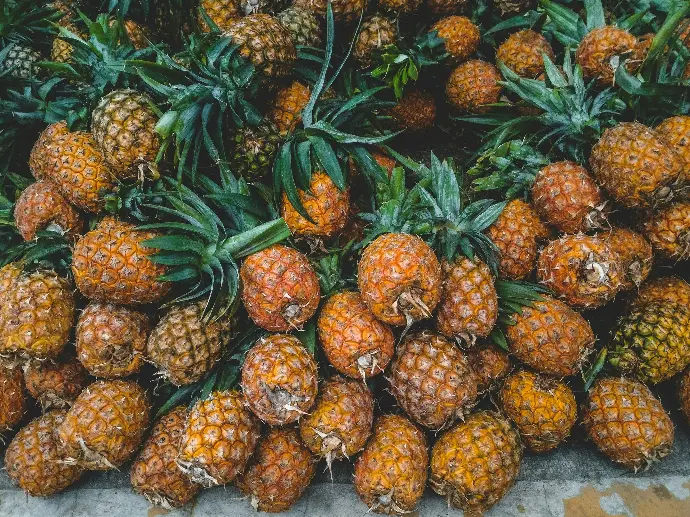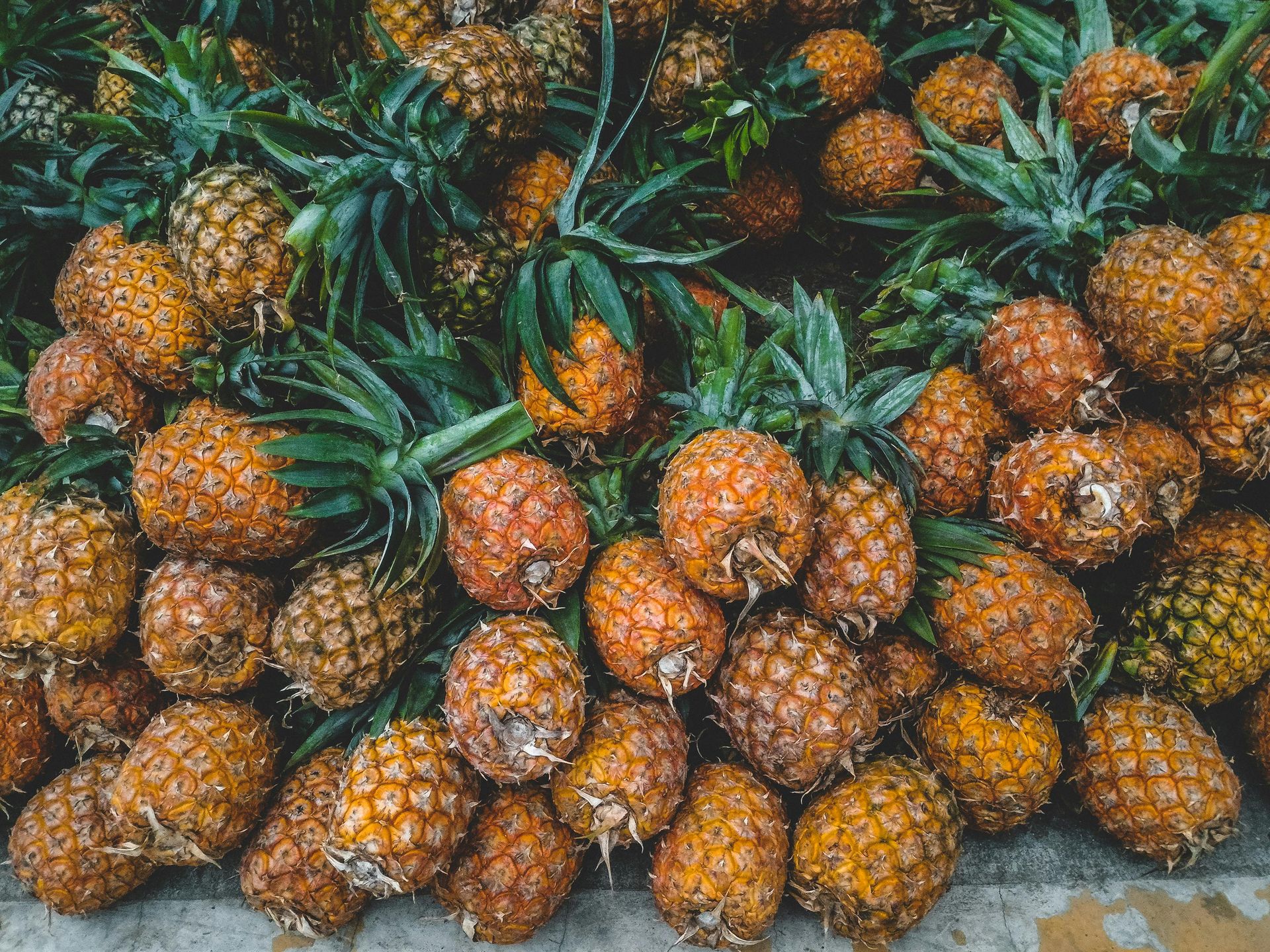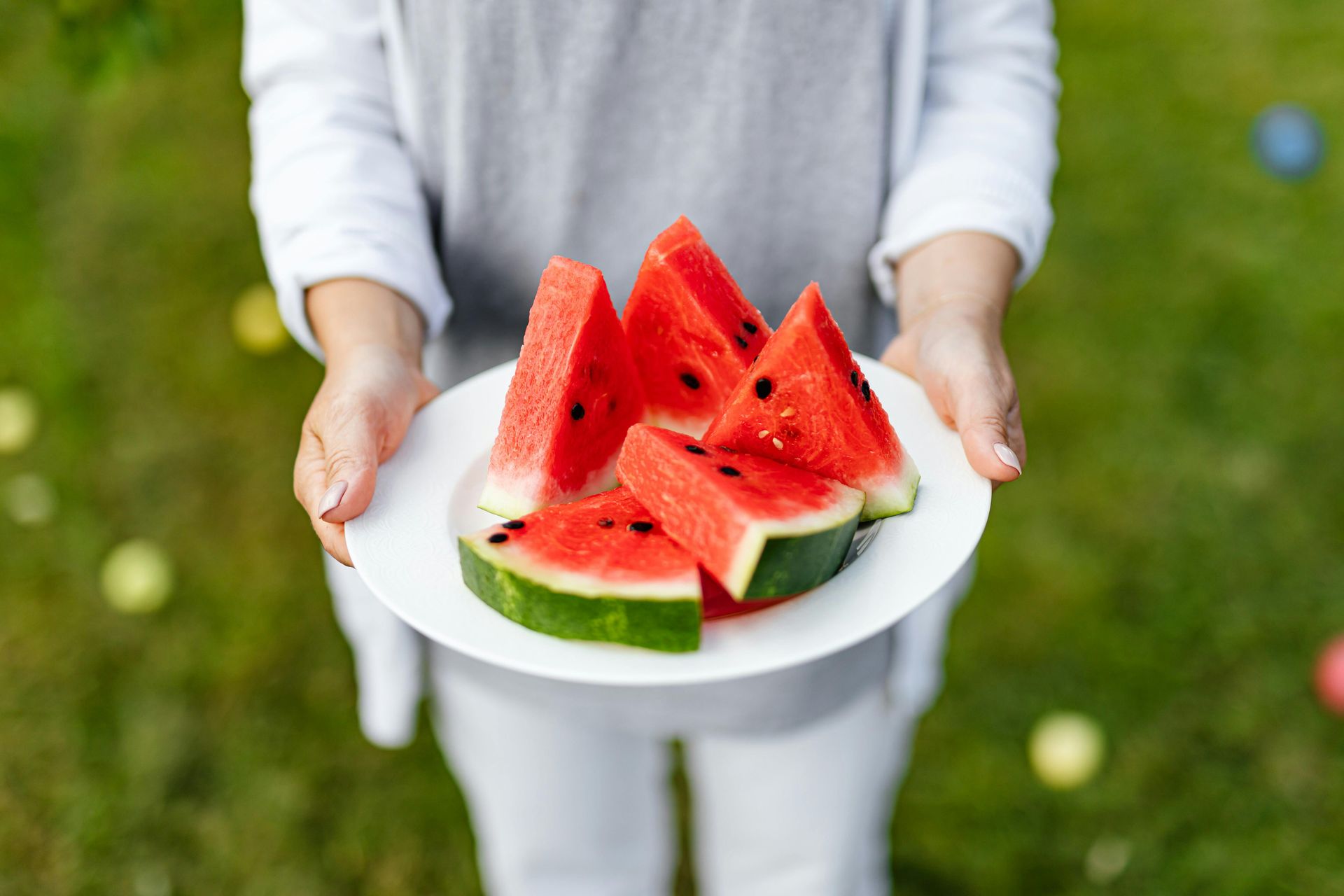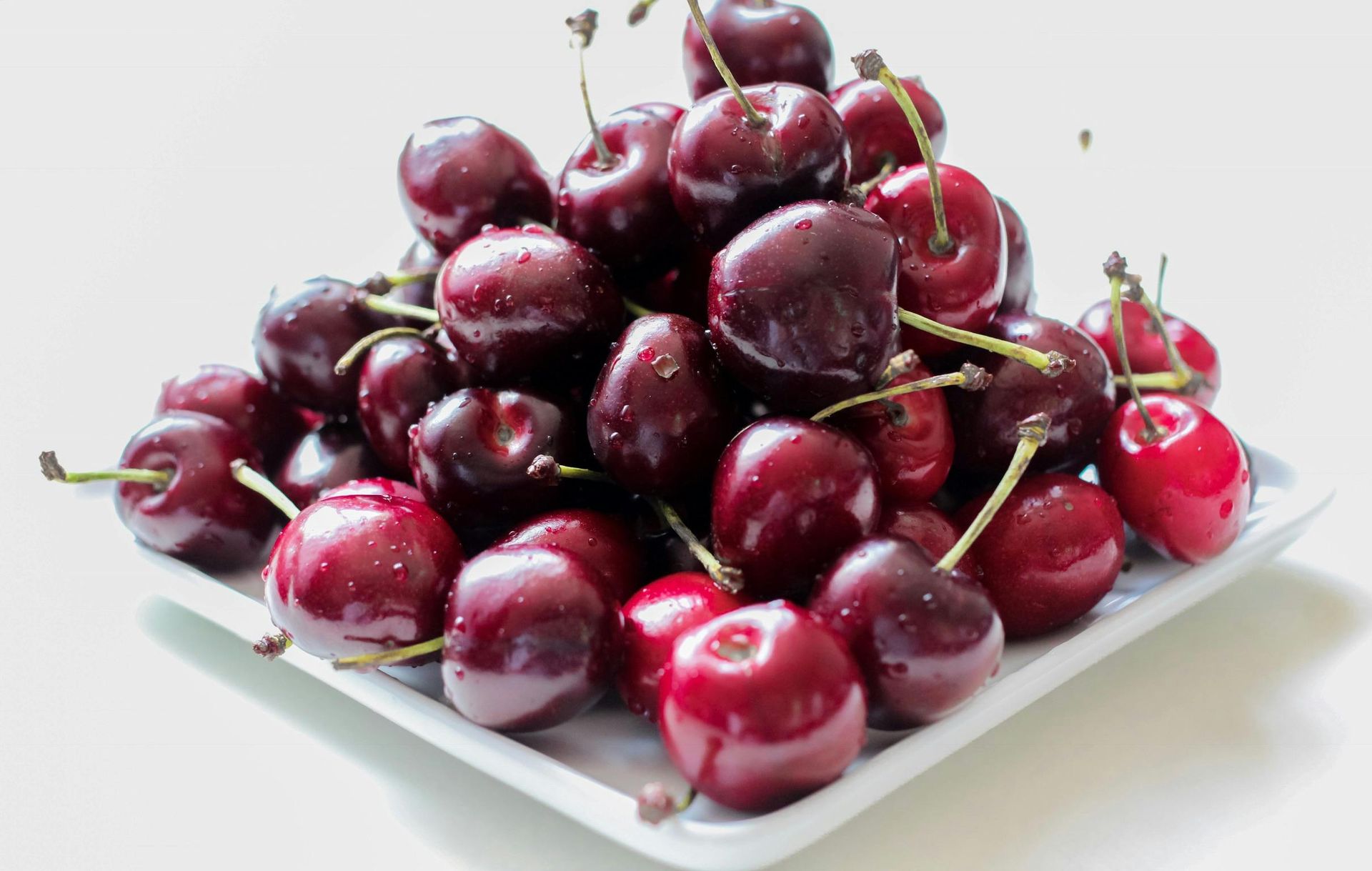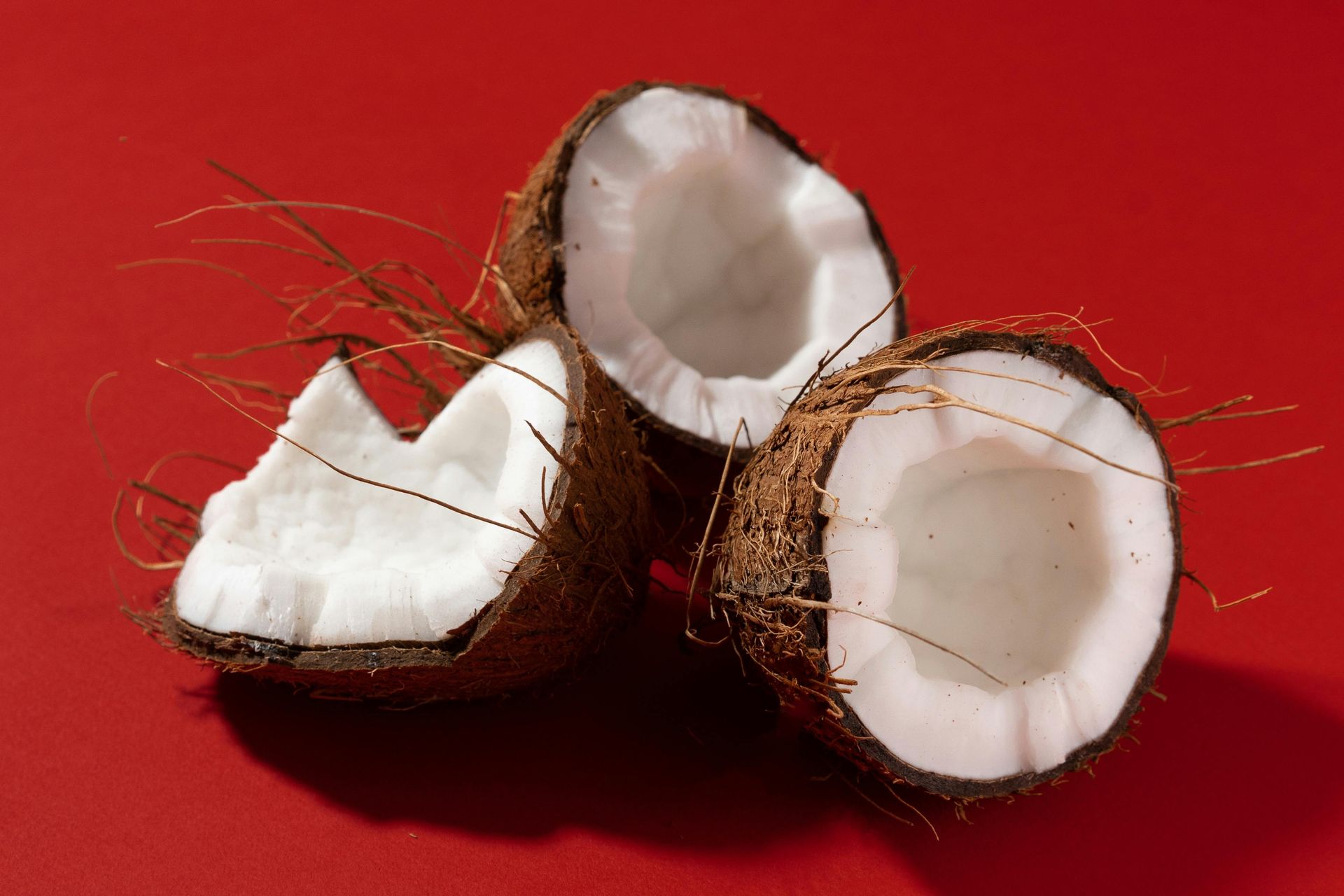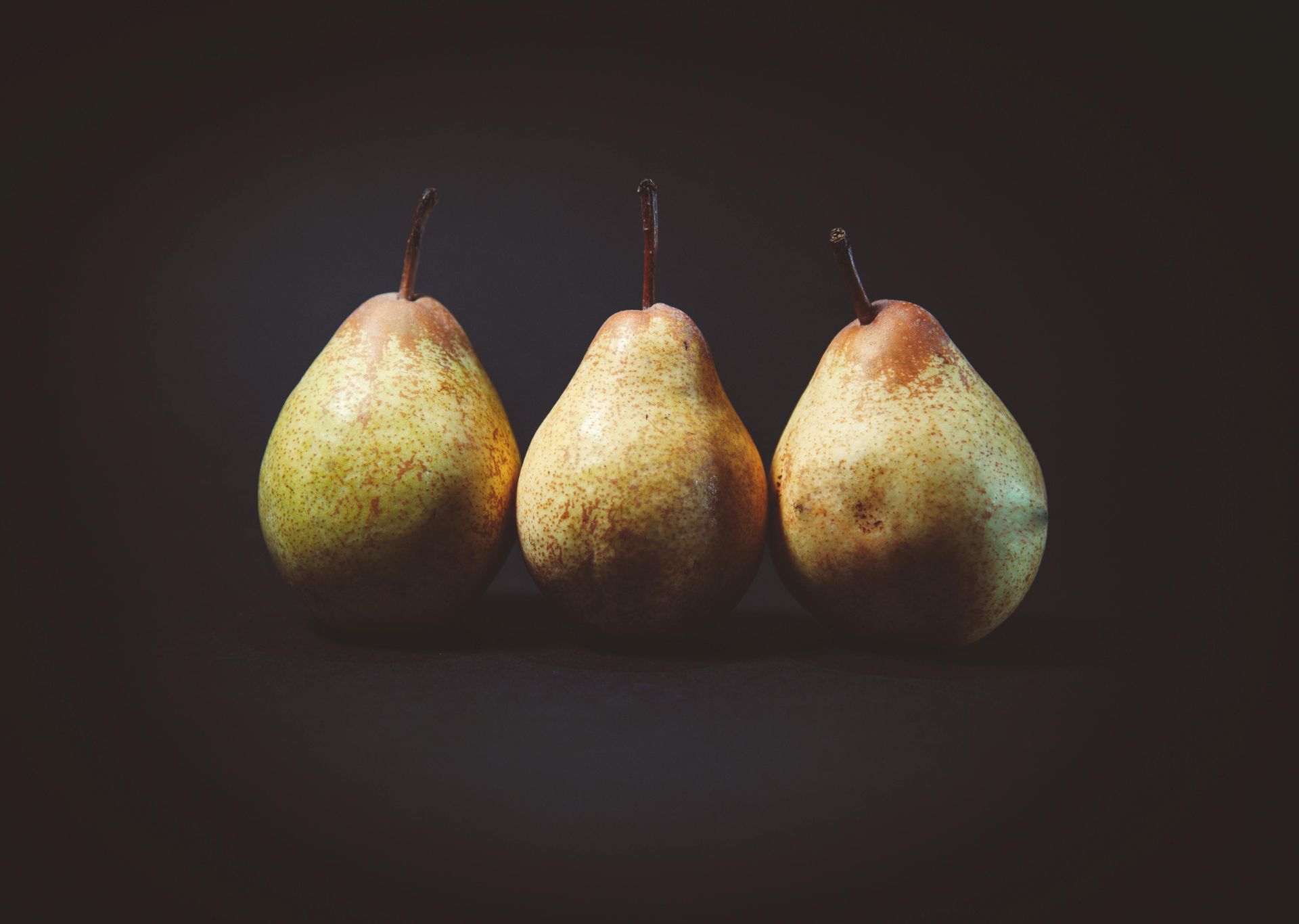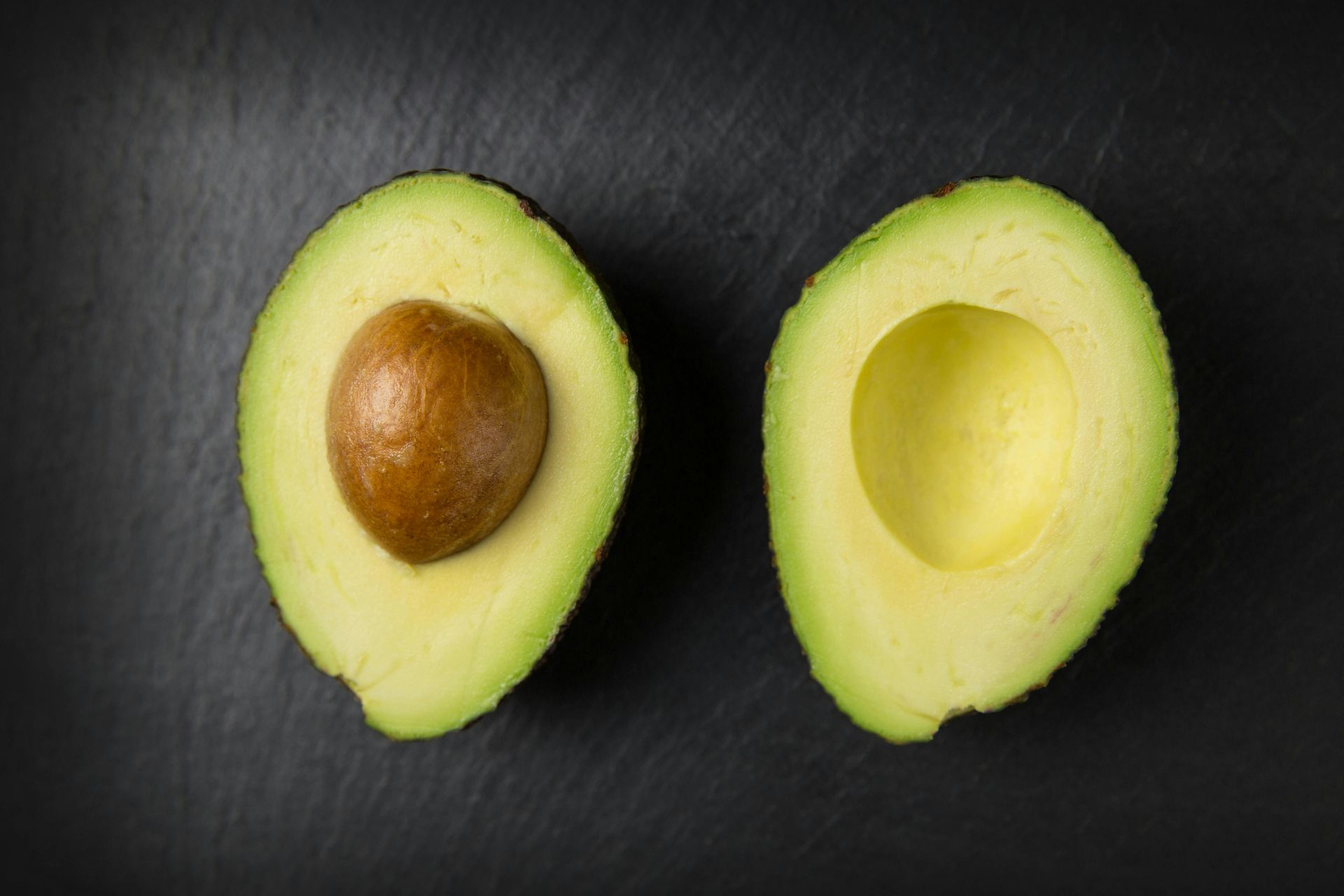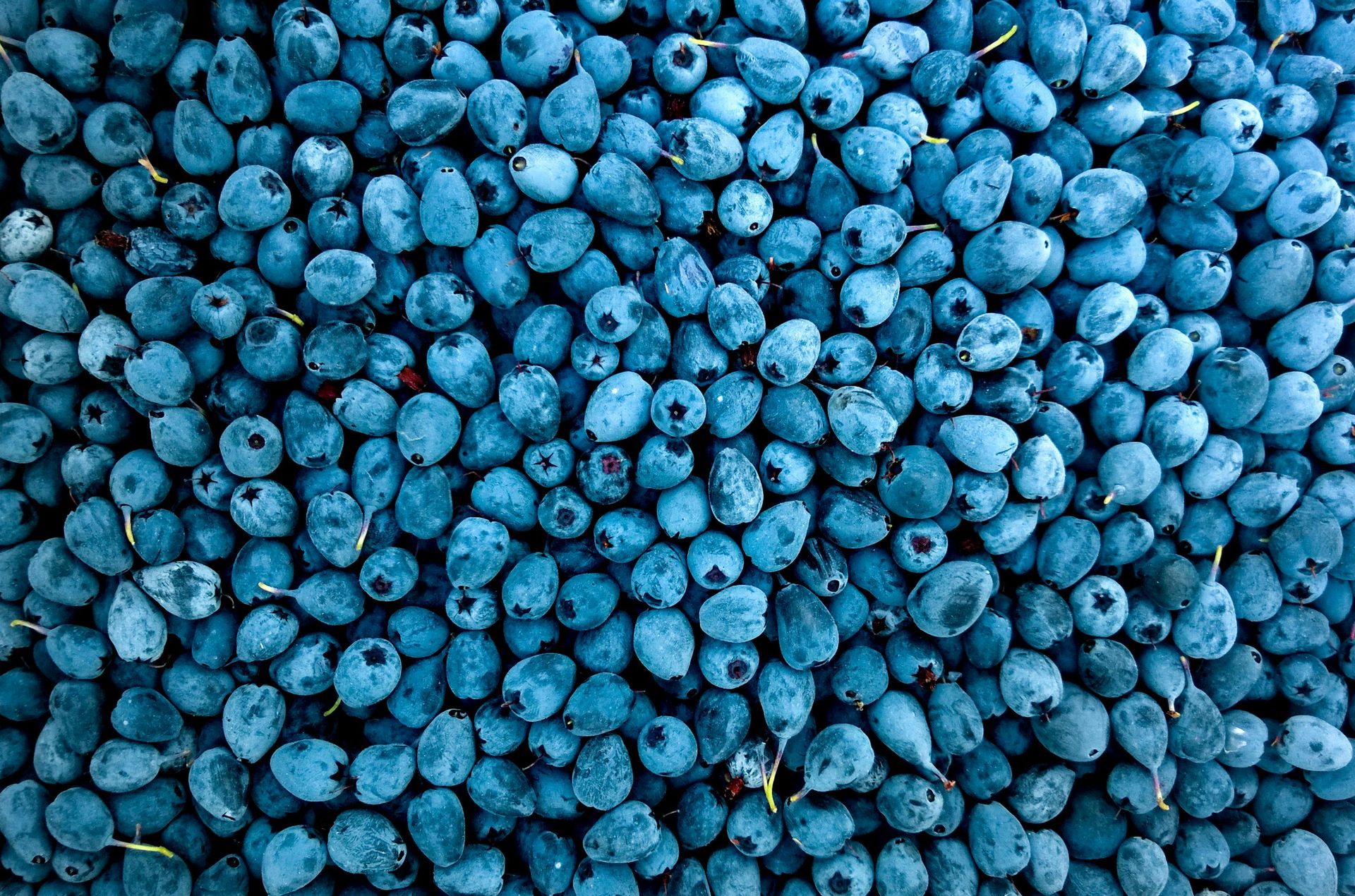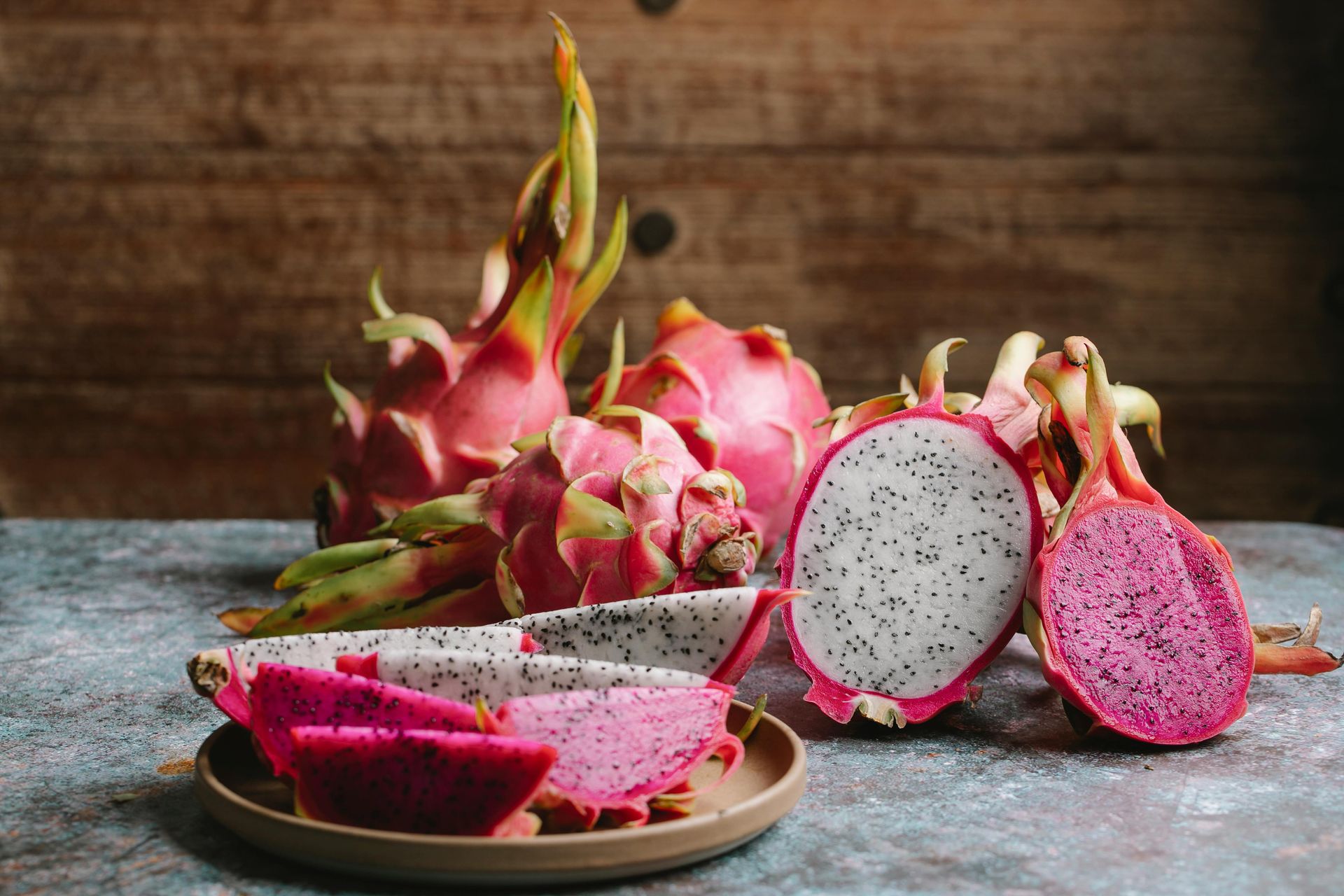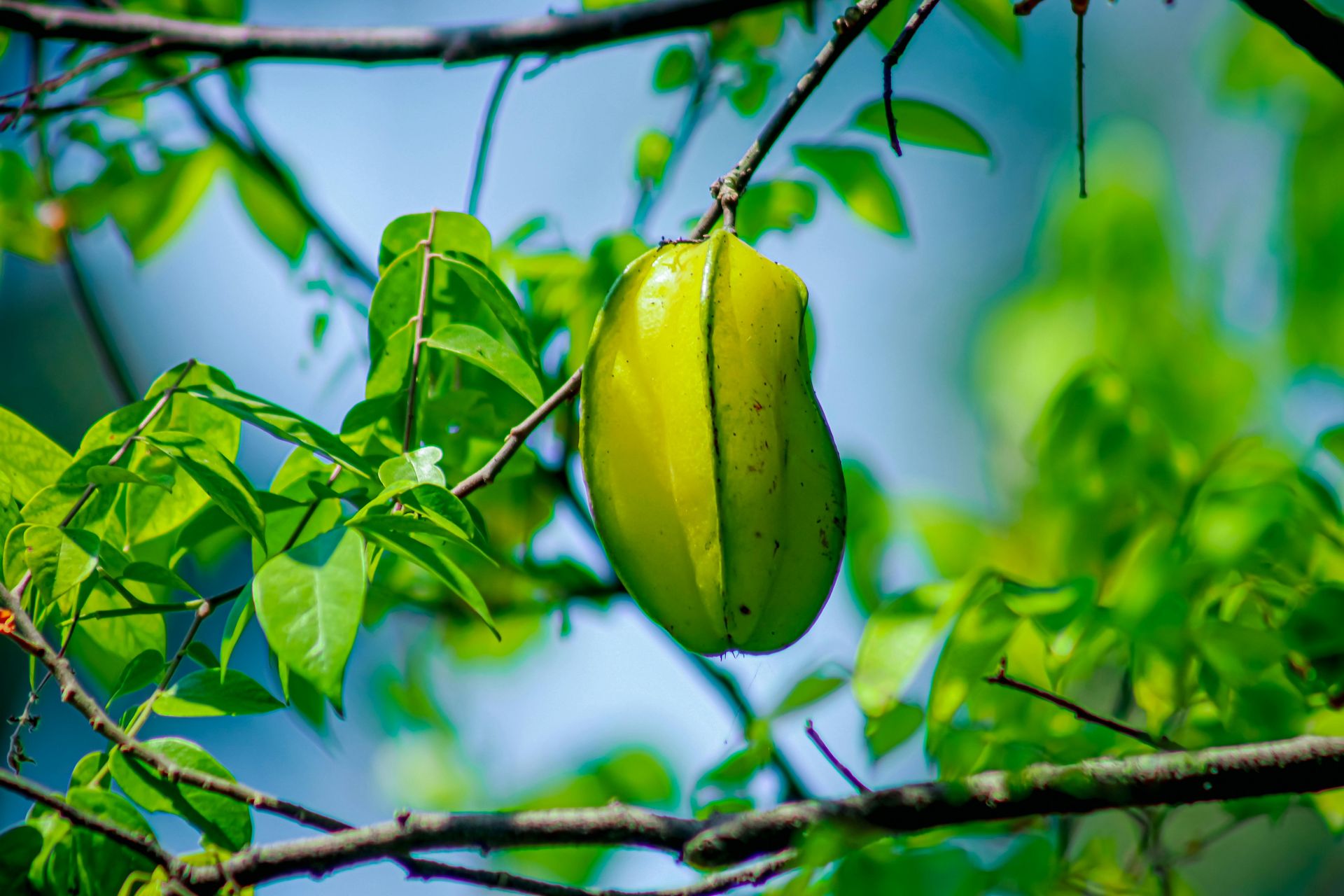
BANANA
To add a fourth column, reduce the size of these three columns using the right icon of each block. Then, duplicate one of the columns to create a new one as a copy.

GRAPES
Delete the above image or replace it with a picture that illustrates your message. Click on the picture to change its rounded corner style.
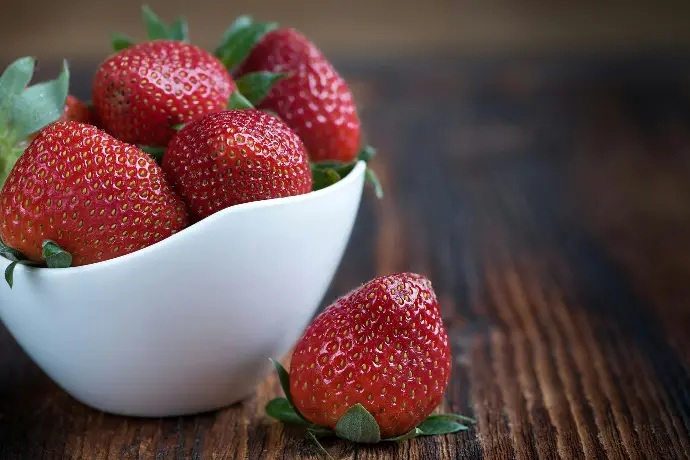
STRAWBERRIES
Adapt these three columns to fit your design need. To duplicate, delete or move columns, select the column and use the top icons to perform your action.

ORANGES
To add a fourth column, reduce the size of these three columns using the right icon of each block. Then, duplicate one of the columns to create a new one as a copy.
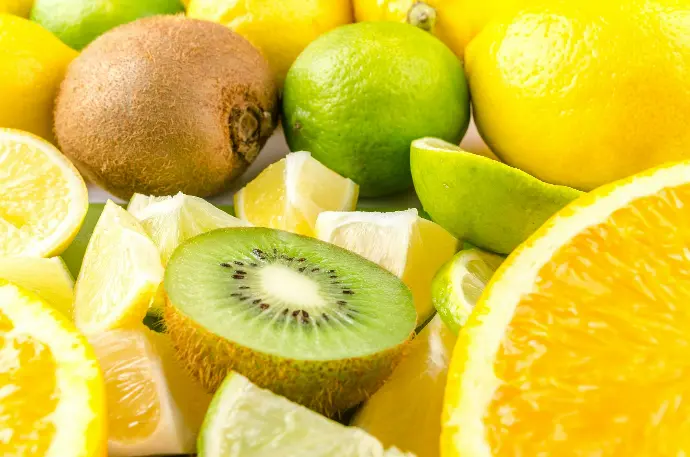
KIWI
Delete the above image or replace it with a picture that illustrates your message. Click on the picture to change its rounded corner style.

PEACHES
Adapt these three columns to fit your design need. To duplicate, delete or move columns, select the column and use the top icons to perform your action.
READ MORE
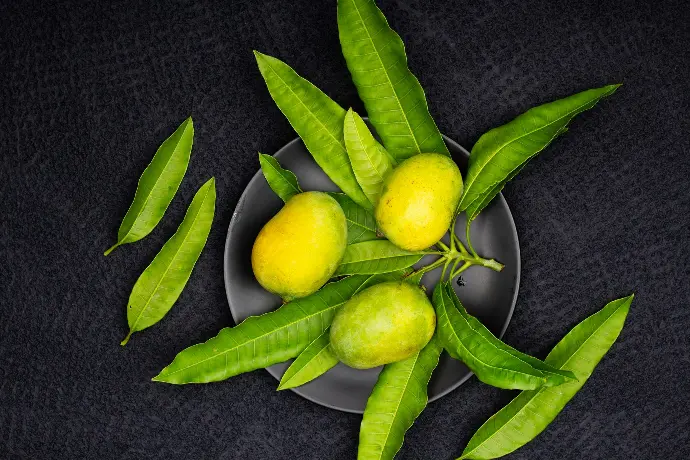
MANGO
Delete the above image or replace it with a picture that illustrates your message. Click on the picture to change its rounded corner style.

WATERMELON
Adapt these three columns to fit your design need. To duplicate, delete or move columns, select the column and use the top icons to perform your action.

CANTALOUPE
To add a fourth column, reduce the size of these three columns using the right icon of each block. Then, duplicate one of the columns to create a new one as a copy.
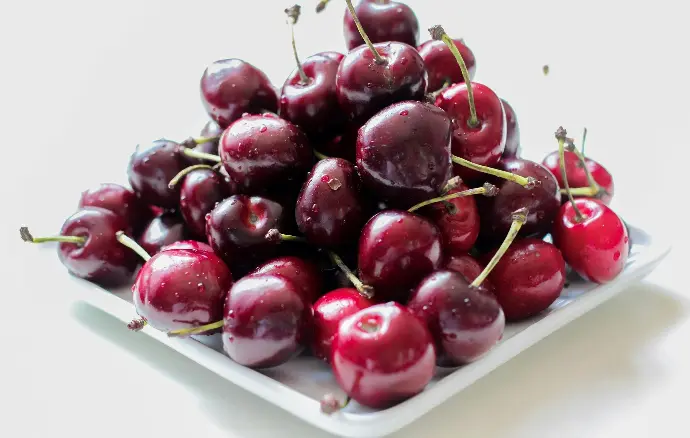
CHERRIES
Delete the above image or replace it with a picture that illustrates your message. Click on the picture to change its rounded corner style.

COCONUT
Adapt these three columns to fit your design need. To duplicate, delete or move columns, select the column and use the top icons to perform your action.

LEMON
To add a fourth column, reduce the size of these three columns using the right icon of each block. Then, duplicate one of the columns to create a new one as a copy.

PEARS
Delete the above image or replace it with a picture that illustrates your message. Click on the picture to change its rounded corner style.

GUAVA
Adapt these three columns to fit your design need. To duplicate, delete or move columns, select the column and use the top icons to perform your action.
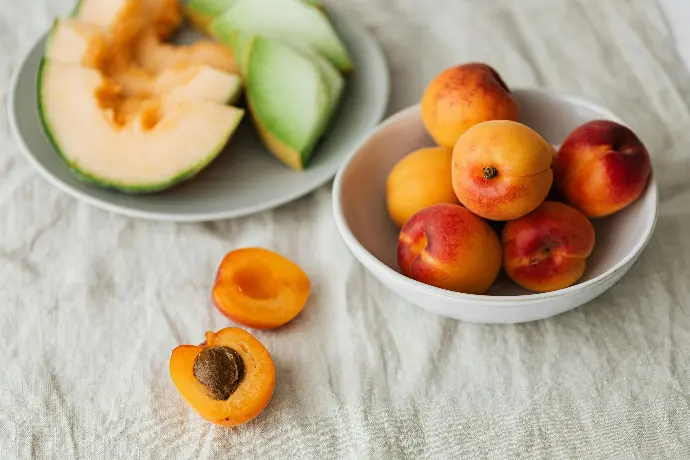
APRICOTS
To add a fourth column, reduce the size of these three columns using the right icon of each block. Then, duplicate one of the columns to create a new one as a copy.

AVACADO
Delete the above image or replace it with a picture that illustrates your message. Click on the picture to change its rounded corner style.

PAPAYA
Adapt these three columns to fit your design need. To duplicate, delete or move columns, select the column and use the top icons to perform your action.

BLUE BERRIES
To add a fourth column, reduce the size of these three columns using the right icon of each block. Then, duplicate one of the columns to create a new one as a copy.

DRAGON FRUIT
Delete the above image or replace it with a picture that illustrates your message. Click on the picture to change its rounded corner style.

PLUMS
Adapt these three columns to fit your design need. To duplicate, delete or move columns, select the column and use the top icons to perform your action.

RASPBERRIES
To add a fourth column, reduce the size of these three columns using the right icon of each block. Then, duplicate one of the columns to create a new one as a copy.
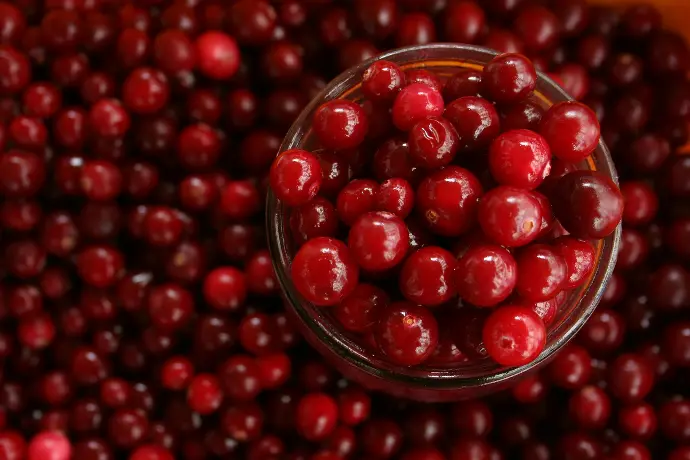
CRANBERRIES
Delete the above image or replace it with a picture that illustrates your message. Click on the picture to change its rounded corner style.

POMEGRANATES
Adapt these three columns to fit your design need. To duplicate, delete or move columns, select the column and use the top icons to perform your action.

FIGS
To add a fourth column, reduce the size of these three columns using the right icon of each block. Then, duplicate one of the columns to create a new one as a copy.

STAR FRUIT
Delete the above image or replace it with a picture that illustrates your message. Click on the picture to change its rounded corner style.

JACK FRUIT
Adapt these three columns to fit your design need. To duplicate, delete or move columns, select the column and use the top icons to perform your action.

LYCHEES
To add a fourth column, reduce the size of these three columns using the right icon of each block. Then, duplicate one of the columns to create a new one as a copy.

DURIAN
Delete the above image or replace it with a picture that illustrates your message. Click on the picture to change its rounded corner style.

Feature One
Adapt these three columns to fit your design need. To duplicate, delete or move columns, select the column and use the top icons to perform your action.

PERSIMMONS
To add a fourth column, reduce the size of these three columns using the right icon of each block. Then, duplicate one of the columns to create a new one as a copy.

DATES
Delete the above image or replace it with a picture that illustrates your message. Click on the picture to change its rounded corner style.
The Ultimate Guide to Healthy Fruits: Power Up Your Diet with Nature's Bounty
Welcome to Activelifeline.com, your go-to destination for all things health and fitness. Today, we're diving into the vibrant world of fruits, uncovering their myriad benefits and how they can revolutionize your health journey. From boosting immunity to promoting weight loss, these nutritional powerhouses are nature's gift to our well-being.
Introduction:
In a world inundated with processed foods and sugary snacks, incorporating more fruits into your diet is a refreshing and vital step towards optimal health. Packed with vitamins, minerals, fiber, and antioxidants, fruits offer a delicious and nutritious way to fuel your body and nourish your soul.
The Science Behind Fruits: Numerous scientific studies have extolled the health benefits of fruits. Their rich antioxidant content helps combat oxidative stress, reducing the risk of chronic diseases such as heart disease, diabetes, and cancer. Moreover, their high fiber content aids digestion, promotes satiety, and supports gut health.
Top Picks for Your Plate:
- Berries: Bursting with flavor and nutrients, berries like strawberries, blueberries, and raspberries are packed with antioxidants and fiber. They're also low in calories, making them an excellent choice for weight management.
- Citrus Fruits: Oranges, lemons, grapefruits, and limes are renowned for their high vitamin C content, which boosts immunity and collagen production. Additionally, citrus fruits contain flavonoids that support heart health and may reduce the risk of stroke.
- Apples: An apple a day truly keeps the doctor away! Rich in soluble fiber and phytonutrients, apples help regulate blood sugar levels, improve cholesterol profiles, and promote healthy digestion.
- Bananas: This potassium-rich fruit is a favorite among athletes for its ability to replenish electrolytes and prevent muscle cramps. Bananas are also a good source of vitamin B6, which supports nervous system function.
- Avocados: While technically a fruit, avocados are a unique powerhouse of healthy fats, fiber, and essential nutrients. They're especially beneficial for heart health, weight management, and skin vitality.
Incorporating Fruits into Your Diet:
Now that you're familiar with the nutritional prowess of various fruits, let's explore some creative ways to incorporate them into your daily meals:
- Start your day with a refreshing fruit smoothie or a bowl of mixed berries topped with Greek yogurt and nuts.
- Snack on fresh fruits like apple slices with almond butter or a handful of grapes paired with cheese.
- Add sliced bananas or berries to your morning oatmeal or whole grain cereal for a nutritious boost.
- Jazz up your salads with a colorful array of fruits such as mandarin oranges, pomegranate seeds, or diced mango.
- Get creative in the kitchen by experimenting with fruit-based sauces, salsas, and chutneys to complement savory dishes like grilled chicken or fish.
Conclusion: Incorporating a variety of fruits into your diet is a simple yet powerful strategy for enhancing your health and vitality. Whether you're aiming to boost your immune system, maintain a healthy weight, or simply indulge in nature's sweetness, there's a fruit for every palate and purpose. So why wait? Dive into the abundance of nature's bounty and let fruits be your ally on the journey to a healthier, happier you.
Stay tuned to Activelifeline.com for more expert insights, tips, and resources to support your health and fitness goals. Remember, your health is your lifeline – embrace it with vitality and vigor!
About Activelifeline.com: At Activelifeline.com, we're committed to empowering individuals to live their healthiest, most vibrant lives. From nutritious recipes and workout routines to expert advice and community support, we provide the tools and resources you need to thrive. Join us on the path to wellness and let's journey together towards a brighter, healthier future
Exploring the Orchard: A Comprehensive Guide to Fruits
Welcome to "Exploring the Orchard: A Comprehensive Guide to Fruits," your ultimate resource for delving into the delicious and nutritious world of fruits. From the crisp allure of apples to the tropical zest of bananas and the juicy sweetness of grapes, our blog offers in-depth insights into the health benefits, nutritional profiles, and culinary uses of various fruits. Whether you're a health enthusiast looking to optimize your diet, a parent seeking nutritious options for your children, or simply a food lover eager to explore new flavors, our guide is designed to enrich your understanding and appreciation of nature's sweetest bounty. Join us as we explore the vibrant and healthful world of fruits!
Detailed Fruit Profile: The Apple
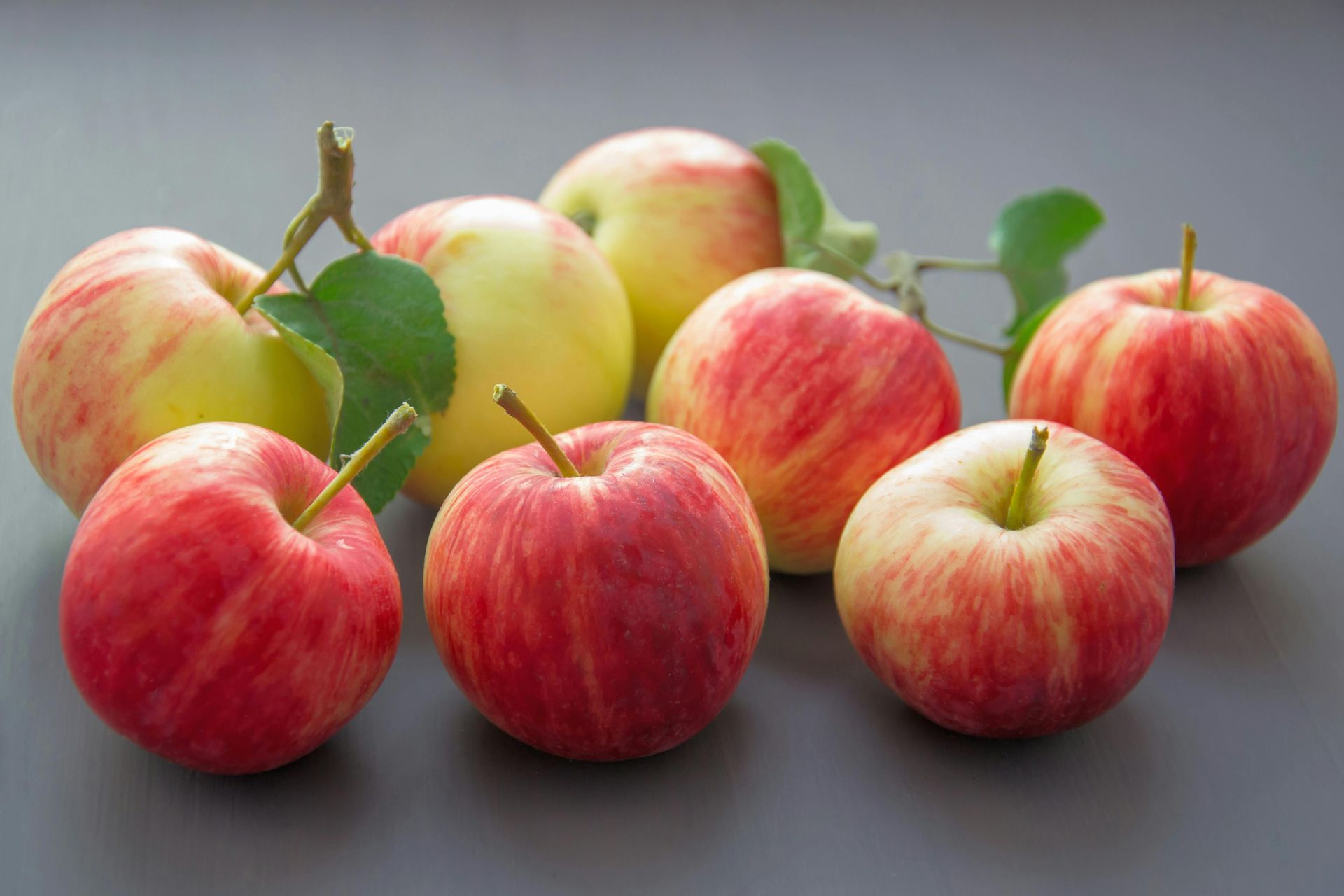
Overview: The apple, known scientifically as Malus domestica, is one of the most widely cultivated tree fruits. It originated in Central Asia, where its wild ancestor, Malus sieversii, is still found today. Apples have been grown for thousands of years in Asia and Europe and were brought to North America by European colonists. Apples come in a variety of shades and sizes, typically ranging from red to green to yellow, with flavors that vary from sweet to tart. The texture can be crisp and juicy, making them a popular choice fresh or in culinary creations.
Nutritional Profile: Apples are a good source of several vitamins and minerals, primarily Vitamin C and potassium. They are rich in fiber, particularly in the peel, and include a modest amount of vitamin K, vitamin B6, and manganese. A typical medium-sized apple (about 182 grams) contains approximately:
- Calories: 95
- Carbohydrates: 25 g (including 19 g of sugar and 4 g of fiber)
- Protein: 0.5 g
- Fat: 0.3 g
Health Benefits: Apples offer numerous health benefits. They are particularly known for their role in promoting heart health due to their fiber content, which helps lower blood cholesterol levels. The fiber also aids in digestive health and can help regulate blood sugars, making apples a wise choice for diabetic management. Various studies have linked apple consumption to a reduced risk of chronic diseases including heart disease, cancer, and diabetes. For instance, the Women’s Health Study found that women who consumed apples had a 13% to 22% decrease in cardiovascular disease risk.
Culinary Uses: Apples are extremely versatile in cooking and baking. They can be eaten fresh, cooked into sauces like applesauce, baked into desserts like apple pie, and even incorporated into savory dishes like roasted pork. Apples are also commonly used in juices and ciders. Traditionally, they have been used in numerous cuisines around the world, from American apple pie to French tarte tatin, and even in chutneys and curries in Indian cuisine.
Best Time to Eat: Apples can be eaten at any time of the day. They are particularly beneficial as a snack between meals because of their fiber content, which can help control hunger and stabilize blood sugar levels. Including apples in breakfast cereals, lunch salads, or as an evening snack are excellent ways to enjoy their health benefits throughout the day.
Safety and Precautions: Apples are generally safe for most people, but they should be consumed in moderation. The seeds contain amygdalin, a compound that can release cyanide in the gut, though the amount is usually too small to be harmful. Apples should be washed thoroughly to remove pesticides and cut into appropriate sizes for children to avoid choking hazards.
Suitability for Special Diets: Apples are suitable for a wide range of dietary needs. They are naturally gluten-free, making them ideal for those with celiac disease or gluten sensitivity. For vegan and vegetarian diets, apples provide a good source of fiber and vitamins. Diabetics can also enjoy apples, but it’s best to consume them with the peel for maximum fiber content to help manage blood sugar levels.
Interesting Facts: The phrase "An apple a day keeps the doctor away" dates back to 19th century Wales, and studies have shown there might be truth to this old saying given their nutritional benefits. There are over 7,500 varieties of apples grown worldwide, each with its own unique characteristics.
Detailed Fruit Profile: The Banana

Overview: Bananas, botanically known as Musa spp., are among the most popular fruits globally. Native to Southeast Asia, bananas are now cultivated in tropical and subtropical regions worldwide. Characterized by their bright yellow color when ripe, bananas offer a creamy texture and a naturally sweet taste. They are typically consumed raw and are known for their distinctive curve and soft, easily digestible flesh.
Nutritional Profile: Bananas are a significant source of several essential nutrients, particularly potassium, vitamin B6, and vitamin C. They also provide dietary fiber and are low in fat. Here’s the nutritional breakdown for a medium-sized banana (approximately 118 grams):
- Calories: 105
- Carbohydrates: 27 g (including 14 g of sugars and 3 g of fiber)
- Protein: 1.3 g
- Fat: 0.3 g
- Potassium: 422 mg
- Vitamin B6: 0.4 mg
Health Benefits: Bananas are renowned for their health benefits. The high potassium content helps maintain heart health and blood pressure levels. Vitamin B6 supports brain function and mood regulation. The fiber in bananas aids in digestive health and helps regulate blood sugar levels, making them a prudent choice for diabetes management. Scientific studies, such as those published in the Journal of the American College of Nutrition, have demonstrated that regular consumption of bananas can reduce the risk of hypertension and atherosclerosis.
Culinary Uses: Bananas are versatile in culinary uses, enjoyed both fresh and in cooked forms. They are a staple ingredient in smoothies, baked goods like banana bread, and desserts such as banana pudding. In many cultures, bananas are also cooked or fried, often used in dishes like banana chips, fritters, or plantain-based savories in African and Caribbean cuisines.
Best Time to Eat: Bananas can be enjoyed at any time of the day. They are particularly beneficial as a mid-morning or afternoon snack, providing a quick energy boost. Incorporating bananas into breakfast, such as in oatmeal or yogurt, can help start the day with a sustained energy release.
Safety and Precautions: Bananas are generally safe for most people, but those with a latex allergy may experience a cross-reaction due to proteins in bananas that mimic latex proteins. They should be consumed in moderation due to their sugar content, especially by those managing diabetes.
Suitability for Special Diets: Bananas fit well into various dietary frameworks. They are naturally vegan, gluten-free, and align with a low-fat diet. For ketogenic dieters, bananas are typically too high in carbohydrates but can be consumed in very small portions.
Interesting Facts: The banana plant is not a tree but a high herb, and the banana itself is considered a berry. The scientific name for the banana, Musa, is derived from Antonius Musa, personal physician to Emperor Augustus of Rome.
Intended Audience: This detailed fruit profile is intended for general consumers, individuals with dietary restrictions like diabetes, athletes seeking energy-rich foods, and families looking for nutritious options for children.
Tone and Style Requirements: The tone of this profile is educational yet accessible, aiming to provide well-rounded, scientifically backed information in a clear and engaging manner
Detailed Fruit Profile: The Grape
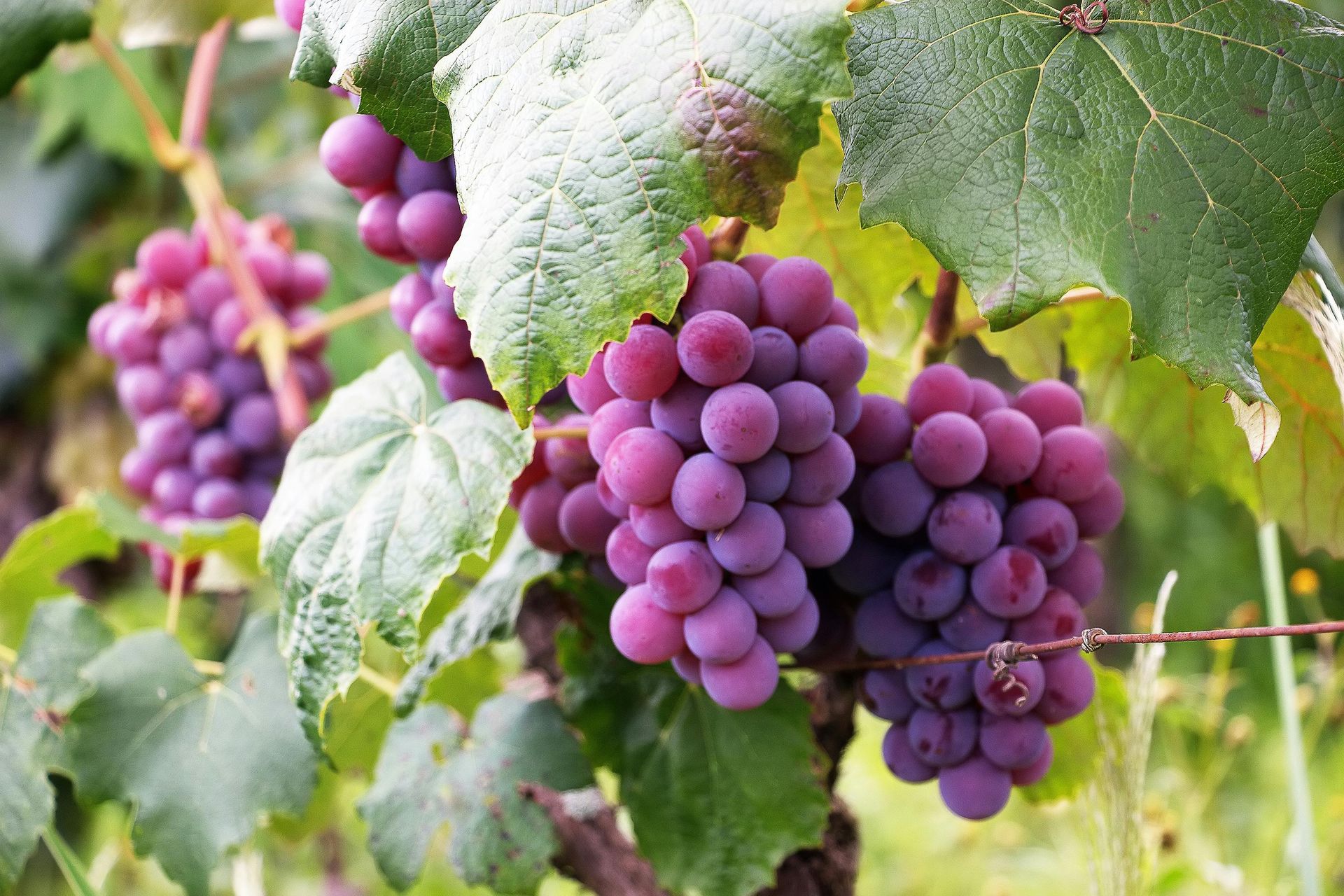
Overview: Grapes, belonging to the genus Vitis, are one of the oldest cultivated fruits, with a history dating back thousands of years. Originating in the Mediterranean region and central Asia, grapes are now grown in various climates worldwide. These small, round berries are known for their juicy sweetness and come in a spectrum of colors including green, red, black, and purple. Grapes can be seedless or contain seeds, and their taste can range from tart to intensely sweet.
Nutritional Profile: Grapes are packed with essential nutrients, primarily vitamins C and K, potassium, and antioxidants such as resveratrol. A typical serving of grapes (about 1 cup or 151 grams) provides approximately:
- Calories: 104
- Carbohydrates: 27.3 g (including 23.4 g of sugars and 1.4 g of fiber)
- Protein: 1.1 g
- Fat: 0.2 g
- Vitamin C: 16.3 mg
- Vitamin K: 22.4 mcg
- Potassium: 288 mg
Health Benefits: The nutrients in grapes offer a plethora of health benefits. Antioxidants like resveratrol have been linked to reduced inflammation, improved heart health, and potential cancer-fighting properties. Studies have shown that regular consumption of grapes may lower the risk of chronic diseases such as heart disease and certain cancers. Grapes also contain polyphenols that support cognitive function and may help protect against age-related cognitive decline.
Culinary Uses: Grapes are versatile in culinary applications. They are commonly consumed fresh as a snack or added to fruit salads. Grapes are also used in cooking and baking, contributing sweetness and moisture to dishes like tarts, jams, and sauces. In Mediterranean cuisine, grapes are a staple in dishes such as grape leaf-wrapped dolmas and as a complement to cheese platters.
Best Time to Eat: Grapes can be enjoyed at any time of the day. They make a refreshing snack on their own or paired with cheese or nuts. Including grapes in breakfast smoothies, lunch salads, or as a dessert after dinner are excellent ways to incorporate them into daily meals.
Safety and Precautions: While grapes are generally safe for consumption, some individuals may experience allergic reactions, particularly to certain proteins in the skin. Additionally, grapes should be washed thoroughly to remove any pesticide residue before eating.
Suitability for Special Diets: Grapes are suitable for a variety of dietary needs. They are naturally vegan, gluten-free, and low in fat. Grapes can be incorporated into vegan and vegetarian diets, and their natural sweetness makes them a satisfying option for those following a low-sugar diet.
Interesting Facts:
- The cultivation of grapes for winemaking dates back over 8,000 years, making them one of the oldest domesticated crops.
- The term "raisin" comes from the Latin word "racemus," which means "a cluster of grapes."
- Grapes are botanically classified as berries.
Intended Audience: This detailed fruit profile is intended for general consumers, health-conscious individuals, and those interested in exploring the culinary versatility and health benefits of grapes.
Tone and Style Requirements: The tone of this profile is professional and educational, offering thorough information in an engaging and accessible manner
Detailed Fruit Profile: The Strawberry

Overview: Strawberries, scientifically known as Fragaria ananassa, are a beloved fruit prized for their vibrant color, juicy texture, and sweet-tart flavor. Native to temperate regions of the world, including Europe and North America, strawberries have been cultivated for centuries. They are distinguished by their bright red hue, small seeds studding their surface, and green leafy caps. Strawberries are commonly consumed fresh but are also used in various culinary applications.
Nutritional Profile: Strawberries are packed with essential nutrients, including vitamin C, manganese, and dietary fiber. A typical serving of strawberries (about 1 cup or 152 grams) provides approximately:
- Calories: 49
- Carbohydrates: 11.7 g (including 7.4 g of sugars and 3 g of fiber)
- Protein: 1 g
- Fat: 0.4 g
- Vitamin C: 89.4 mg
- Manganese: 0.6 mg
Health Benefits: Strawberries offer numerous health benefits attributed to their rich nutrient content. They are particularly high in vitamin C, which supports immune function and skin health. Studies have shown that the antioxidants in strawberries may help reduce inflammation, lower cholesterol levels, and improve heart health. The fiber content aids in digestion and can contribute to weight management. Additionally, strawberries contain compounds like ellagic acid, which may have anti-cancer properties.
Culinary Uses: Strawberries are incredibly versatile in the kitchen and can be enjoyed fresh, cooked, or preserved. They are commonly used in desserts such as cakes, pies, and ice creams, as well as in jams, sauces, and compotes. Strawberries add a burst of flavor and vibrant color to salads, smoothies, and yogurt parfaits. In many cuisines around the world, strawberries are celebrated in both sweet and savory dishes.
Best Time to Eat: Strawberries can be enjoyed at any time of the day, but they are especially refreshing as a morning treat or a midday snack. Incorporating strawberries into breakfast dishes like oatmeal or pancakes adds natural sweetness and a dose of vitamins to start the day off right. They also make a delicious addition to afternoon snacks or desserts.
Safety and Precautions: While strawberries are generally safe for consumption, some individuals may experience allergic reactions, particularly those allergic to birch pollen or other fruits in the Rosaceae family. It's essential to thoroughly wash strawberries to remove any pesticide residue before eating. Additionally, strawberries should be served to young children cut into small, manageable pieces to reduce the risk of choking.
Suitability for Special Diets: Strawberries are compatible with various dietary frameworks, including vegan, vegetarian, and gluten-free diets. They are low in calories and fat, making them suitable for those watching their weight. For individuals managing diabetes, strawberries can be enjoyed in moderation as part of a balanced meal plan due to their relatively low glycemic index.
Interesting Facts:
- Despite their name, strawberries are not technically berries but rather aggregate fruits, as their seeds are on the outside.
- The strawberry plant is a member of the rose family.
- The garden strawberry, the most common variety, is a hybrid species cultivated for its large, sweet fruit.
Intended Audience: This detailed fruit profile is intended for general consumers, health-conscious individuals, and families looking to incorporate nutritious and delicious strawberries into their diets.
Tone and Style Requirements: The tone of this profile is informative yet engaging, providing comprehensive information in an accessible and reader-friendly manner.
Detailed Fruit Profile: The Orange

Overview: Oranges, scientifically known as Citrus sinensis, are one of the most popular citrus fruits globally. Native to Southeast Asia, oranges have been cultivated for thousands of years and are now grown in subtropical and tropical regions worldwide. Oranges are renowned for their bright orange color, round shape, and refreshing citrus flavor. They are typically consumed fresh but are also used in various culinary applications and as a flavoring agent in beverages.
Nutritional Profile: Oranges are packed with essential nutrients, including vitamin C, fiber, and antioxidants. A typical medium-sized orange (about 131 grams) provides approximately:
- Calories: 62
- Carbohydrates: 15.4 g (including 12.2 g of sugars and 3.1 g of fiber)
- Protein: 1.2 g
- Fat: 0.2 g
- Vitamin C: 69.7 mg
- Fiber: 3.1 g
Health Benefits: Oranges offer numerous health benefits attributed to their rich nutrient content. Vitamin C is essential for immune function, skin health, and wound healing. The antioxidants in oranges, such as flavonoids and beta-carotene, may help reduce inflammation and lower the risk of chronic diseases like heart disease and certain cancers. Studies have shown that regular consumption of oranges may also support healthy blood pressure levels and improve overall cardiovascular health.
Culinary Uses: Oranges are incredibly versatile in culinary applications. They can be enjoyed fresh, juiced, or used as a flavoring agent in both sweet and savory dishes. Oranges are commonly used in desserts such as cakes, pies, and sorbets, as well as in marinades, dressings, and sauces for savory dishes. In many cuisines around the world, oranges are celebrated for their vibrant flavor and aroma.
Best Time to Eat: Oranges can be enjoyed at any time of the day. They make a refreshing morning snack or a healthy addition to breakfast. Consuming oranges between meals can help curb hunger and provide a natural energy boost. Including oranges in salads or as a dessert after meals adds a burst of citrus flavor and essential nutrients to your diet.
Safety and Precautions: While oranges are generally safe for consumption, some individuals may experience allergic reactions, particularly to citrus fruits. The acidic nature of oranges can also cause discomfort for those with acid reflux or sensitive stomachs. It's essential to consume oranges in moderation and to monitor any adverse reactions.
Suitability for Special Diets: Oranges are suitable for various dietary frameworks, including vegan, vegetarian, and gluten-free diets. They are naturally low in calories and fat, making them an excellent choice for weight management. For individuals managing diabetes, oranges can be enjoyed in moderation as part of a balanced meal plan, as they have a moderate glycemic index.
Interesting Facts:
- The orange is a hybrid between the pomelo (Citrus maxima) and the mandarin (Citrus reticulata).
- The color orange was named after the fruit, not the other way around.
- Oranges were once considered a luxury item and were given as gifts during the Chinese New Year celebrations.
Detailed Fruit Profile: The Kiwi

Overview: Kiwi, also known as kiwifruit or Chinese gooseberry, is a small, oval-shaped fruit with fuzzy brown skin and vibrant green flesh speckled with tiny black seeds. Native to China, kiwi was originally known as "yang tao" or "sun peach" before being renamed "kiwi" in New Zealand, where it was first commercially cultivated. Kiwi has a unique sweet-tart flavor, reminiscent of strawberries and melons, and is prized for its nutritional value.
Nutritional Profile: Kiwi is a nutritional powerhouse, packed with essential vitamins, minerals, and antioxidants. A typical serving of kiwi (about 177 grams, or one large fruit) provides approximately:
- Calories: 61
- Carbohydrates: 15 g (including 9 g of sugars and 3 g of fiber)
- Protein: 1.3 g
- Fat: 0.5 g
- Vitamin C: 137.2 mg (more than twice the recommended daily intake)
- Vitamin K: 27.8 mcg
- Potassium: 552 mg
Health Benefits: The high vitamin C content in kiwi supports immune function and collagen synthesis, promoting skin health and wound healing. Kiwi is also rich in antioxidants like vitamin E and polyphenols, which help combat oxidative stress and inflammation. Studies have shown that regular consumption of kiwi may improve digestive health, reduce blood pressure, and lower the risk of heart disease. The fiber content aids in digestion and may help regulate blood sugar levels.
Culinary Uses: Kiwi is incredibly versatile in culinary applications. It can be enjoyed fresh, sliced and added to fruit salads, smoothies, or yogurt parfaits. Kiwi is also commonly used in desserts such as pavlovas, fruit tarts, and sorbets, adding a pop of color and flavor. In savory dishes, kiwi can be used in salsas, marinades, or as a topping for grilled meats or seafood.
Best Time to Eat: Kiwi can be enjoyed at any time of the day. It makes a refreshing addition to breakfast, either eaten on its own or added to cereals or oatmeal. Consuming kiwi as a mid-morning or afternoon snack provides a natural energy boost and helps curb hunger. Including kiwi in salads or desserts after meals adds a burst of flavor and essential nutrients.
Safety and Precautions: While kiwi is generally safe for consumption, some individuals may experience allergic reactions, particularly those allergic to latex or other fruits in the same botanical family (such as bananas or avocados). The fuzzy skin of kiwi can also cause irritation in some people. It's essential to peel kiwi before eating and to consume it in moderation, especially for those prone to digestive issues.
Suitability for Special Diets: Kiwi is suitable for various dietary frameworks, including vegan, vegetarian, and gluten-free diets. It is naturally low in calories and fat, making it an excellent choice for weight management. For individuals managing diabetes, kiwi can be enjoyed in moderation as part of a balanced meal plan, as it has a low glycemic index.
Interesting Facts:
- Kiwi was originally known as the Chinese gooseberry until it was renamed in the mid-20th century in honor of the kiwi bird of New Zealand.
- New Zealand is one of the largest producers of kiwifruit in the world, particularly the Hayward variety, which is the most common type of kiwi sold globally.
- Kiwi contains an enzyme called actinidin, which acts as a natural meat tenderizer and is often used in marinades for tenderizing tough cuts of meat.
Intended Audience: This detailed fruit profile is intended for general consumers, health-conscious individuals, and families seeking to incorporate nutritious and delicious kiwi into their diets.
Tone and Style Requirements: The tone of this profile is informative yet engaging, providing comprehensive information in an accessible and reader-friendly manner
Detailed Fruit Profile: The Peach

Overview: Peaches, scientifically known as Prunus persica, are juicy stone fruits that belong to the rose family. Native to Northwest China, peaches have a rich history dating back thousands of years. They are characterized by their fuzzy skin, which can range in color from yellow to red, and their sweet, succulent flesh. Peaches are enjoyed fresh as well as in various culinary preparations.
Nutritional Profile: Peaches are a nutrient-dense fruit, providing a host of vitamins, minerals, and fiber. A typical serving of peaches (about one medium-sized fruit, approximately 150 grams) provides approximately:
- Calories: 60
- Carbohydrates: 15 g (including 13 g of sugars and 2 g of fiber)
- Protein: 1 g
- Fat: 0 g
- Vitamin C: 11.6 mg
- Vitamin A: 570 IU
- Potassium: 285 mg
Health Benefits: Peaches offer several health benefits attributed to their nutrient content. They are rich in antioxidants, such as vitamin C and beta-carotene, which help combat oxidative stress and inflammation in the body. Studies suggest that regular consumption of peaches may support heart health, aid in digestion due to their fiber content, and contribute to healthy skin and vision.
Culinary Uses: Peaches are incredibly versatile in culinary applications. They can be enjoyed fresh as a snack or added to fruit salads. Peaches are also commonly used in cooking and baking, appearing in pies, cobblers, jams, and preserves. In addition, they can be grilled or roasted to enhance their natural sweetness and served as a side dish or dessert.
Best Time to Eat: Peaches are best enjoyed when they are fully ripe, which typically occurs during the summer months. They make a refreshing snack on hot days and can be incorporated into breakfast dishes like yogurt parfaits or oatmeal. Peaches also pair well with savory dishes and can be used in salads or alongside grilled meats.
Safety and Precautions: While peaches are generally safe for consumption, some individuals may experience allergic reactions, particularly those allergic to other fruits in the Rosaceae family, such as cherries or apples. The fuzzy skin of peaches can also cause irritation in some people. It's essential to wash peaches thoroughly before eating to remove any pesticide residue.
Suitability for Special Diets: Peaches are suitable for various dietary frameworks, including vegan, vegetarian, and gluten-free diets. They are naturally low in calories and fat, making them an excellent choice for weight management. For individuals managing diabetes, peaches can be enjoyed in moderation as part of a balanced meal plan, as they have a moderate glycemic index.
Interesting Facts:
- The peach tree is considered a symbol of longevity and immortality in Chinese culture.
- The world's largest peach cobbler, made with over 75 gallons of peaches, was baked in Georgia, USA, in 2007.
- Peaches are known as "Persian apples" in some cultures due to their origin and resemblance to apples.
Intended Audience: This detailed fruit profile is intended for general consumers, food enthusiasts, and individuals interested in learning more about the nutritional value and culinary uses of peaches.
Tone and Style Requirements: The tone of this profile is informative yet engaging, providing comprehensive information in an accessible and reader-friendly manner
Detailed Fruit Profile: The Pineapple
Overview: The pineapple, scientifically known as Ananas comosus, is a tropical fruit with a distinctive appearance and flavor. Originating from South America, particularly Brazil and Paraguay, pineapples have been cultivated for centuries and are now grown in tropical regions around the world. Known for their spiky exterior and sweet, juicy flesh, pineapples are a popular fruit enjoyed fresh and in various culinary applications.
Key Characteristics: Pineapples have a sweet and tangy flavor with notes of tropical citrus. They have a fibrous, juicy texture and are typically yellow-orange in color when ripe. The exterior of a pineapple is covered in a tough, spiky skin, while the edible flesh inside is segmented into juicy, yellowish-white sections.
Nutritional Profile: Pineapples are packed with essential nutrients, including vitamin C, manganese, and bromelain, an enzyme with anti-inflammatory properties. A typical serving of pineapple (about one cup of chunks or 165 grams) provides approximately:
- Calories: 82
- Carbohydrates: 22 g (including 16 g of sugars and 2.3 g of fiber)
- Protein: 0.9 g
- Fat: 0.2 g
- Vitamin C: 78.9 mg
- Manganese: 1.5 mg
Health Benefits: Pineapples offer several health benefits due to their nutrient content. Vitamin C supports immune function and collagen synthesis, promoting skin health and wound healing. Bromelain, an enzyme found in pineapple, has been studied for its potential anti-inflammatory effects and may aid in digestion. Pineapples are also rich in antioxidants, which help combat oxidative stress and inflammation in the body.
Culinary Uses: Pineapples are incredibly versatile in culinary applications. They can be enjoyed fresh as a snack or added to fruit salads, smoothies, and desserts like fruit tarts and sorbets. Pineapple is also commonly used in cooking, particularly in savory dishes such as stir-fries, grilled meats, and salsas. Additionally, pineapple juice is a popular ingredient in cocktails and tropical beverages.
Best Time to Eat: Pineapples can be enjoyed at any time of the day. They make a refreshing snack on their own or added to breakfast dishes like yogurt or oatmeal. Consuming pineapple between meals can help curb hunger and provide a natural energy boost. Pineapple is also a delicious addition to savory dishes and desserts.
Safety and Precautions: While pineapples are generally safe for consumption, some individuals may experience allergic reactions, particularly to bromelain. The acidity of pineapples may also cause discomfort for those with acid reflux or sensitive stomachs. It's essential to consume pineapples in moderation and to monitor any adverse reactions.
Suitability for Special Diets: Pineapples are suitable for various dietary frameworks, including vegan, vegetarian, and gluten-free diets. They are naturally low in calories and fat, making them an excellent choice for weight management. For individuals managing diabetes, pineapples can be enjoyed in moderation as part of a balanced meal plan, as they have a moderate glycemic index.
Interesting Facts:
- Pineapples were once considered a symbol of wealth and hospitality in Europe, often displayed as extravagant centerpieces at banquets.
- The enzyme bromelain found in pineapples is commonly used as a meat tenderizer and is also used in the production of dietary supplements.
- Pineapples are a type of bromeliad, a family of tropical plants known for their rosette-shaped leaves and vibrant flowers.
Intended Audience: This detailed fruit profile is intended for general consumers, food enthusiasts, and individuals interested in learning more about the nutritional value and culinary uses of pineapples.
Tone and Style Requirements: The tone of this profile is informative yet engaging, providing comprehensive information in an accessible and reader-friendly manner.
Detailed Fruit Profile: The Mango
Overview: The mango, scientifically known as Mangifera indica, is a tropical fruit native to South Asia, where it has been cultivated for over 4,000 years. It belongs to the cashew family and is one of the most popular fruits worldwide. Mangoes are characterized by their oval shape, smooth skin, and vibrant colors, which range from green to yellow, orange, and red when ripe. They have a sweet, tropical flavor with nuances of peach, pineapple, and citrus.
Key Characteristics: Mangoes have a juicy, fibrous texture and a rich, sweet taste. They come in various shapes and sizes, depending on the variety, and are typically ripe when the skin gives slightly to gentle pressure. The flesh can be yellow, orange, or even red, and the flavor varies from mildly sweet to intensely fragrant, depending on the cultivar.
Nutritional Profile: Mangoes are packed with essential nutrients, including vitamins, minerals, and antioxidants. A typical serving of mango (about one cup of sliced fruit or 165 grams) provides approximately:
- Calories: 99
- Carbohydrates: 25 g (including 23 g of sugars and 3 g of fiber)
- Protein: 1.4 g
- Fat: 0.6 g
- Vitamin C: 67 mg
- Vitamin A: 1,262 IU
- Potassium: 257 mg
Health Benefits: Mangoes offer several health benefits due to their nutrient content. They are rich in vitamin C, which supports immune function and collagen synthesis. The antioxidants in mangoes, such as beta-carotene and quercetin, help combat oxidative stress and inflammation, reducing the risk of chronic diseases like heart disease and certain cancers. Additionally, mangoes contain digestive enzymes like amylases and proteases, which aid in digestion and may alleviate constipation.
Culinary Uses: Mangoes are incredibly versatile in culinary applications. They can be enjoyed fresh as a snack or added to fruit salads, smoothies, and salsas. Mangoes are also commonly used in cooking and baking, appearing in dishes like curries, chutneys, desserts, and ice creams. In many tropical cuisines, mangoes are a staple ingredient in both savory and sweet dishes.
Best Time to Eat: Mangoes are best enjoyed when fully ripe, which typically occurs during the summer months. They make a delicious and refreshing snack on hot days and can be incorporated into breakfast dishes like yogurt, oatmeal, or smoothie bowls. Mangoes can also be enjoyed as a dessert or added to savory dishes for a tropical twist.
Safety and Precautions: While mangoes are generally safe for consumption, some individuals may experience allergic reactions, particularly to the sap found in the skin or to the chemical urushiol, which is also present in poison ivy and poison oak. It's essential to wash mangoes thoroughly before peeling and consuming to remove any potential irritants. Additionally, mangoes are high in natural sugars, so individuals with diabetes should monitor their intake.
Suitability for Special Diets: Mangoes are suitable for various dietary frameworks, including vegan, vegetarian, and gluten-free diets. They are naturally low in calories and fat, making them an excellent choice for weight management. For individuals managing diabetes, mangoes can be enjoyed in moderation as part of a balanced meal plan, as they have a moderate glycemic index.
Interesting Facts:
- Mangoes are considered the national fruit of India, Pakistan, and the Philippines.
- There are over 1,000 different varieties of mangoes grown around the world, each with its own unique flavor, texture, and appearance.
- The mango tree is considered sacred in Hinduism, and the leaves are used in religious rituals and ceremonies.
Intended Audience: This detailed fruit profile is intended for general consumers, food enthusiasts, and individuals interested in learning more about the nutritional value and culinary uses of mangoes.
Tone and Style Requirements: The tone of this profile is informative yet engaging, providing comprehensive information in an accessible and reader-friendly manner
Detailed Fruit Profile: The Watermelon
Overview: Watermelon, scientifically known as Citrullus lanatus, is a refreshing and hydrating fruit that belongs to the Cucurbitaceae family, which also includes cucumbers and pumpkins. Originating from West Africa, watermelon is now cultivated in many regions around the world. It is characterized by its thick rind, which encases juicy, sweet flesh ranging from pink to red in color, dotted with black seeds or seedless depending on the variety.
Key Characteristics: Watermelon is known for its crisp and juicy texture, with a high water content that contributes to its thirst-quenching properties. The taste of watermelon is sweet and subtly refreshing, with a hint of floral notes. The flesh can vary in color from pale pink to vibrant red, depending on the variety and ripeness.
Nutritional Profile: Watermelon is a low-calorie fruit that is rich in essential nutrients and hydration. A typical serving of watermelon (about one cup of diced fruit or 152 grams) provides approximately:
- Calories: 46
- Carbohydrates: 11.6 g (including 9.4 g of sugars and 0.6 g of fiber)
- Protein: 0.9 g
- Fat: 0.2 g
- Vitamin C: 12.3 mg
- Vitamin A: 569 IU
- Potassium: 170 mg
Health Benefits: Watermelon offers several health benefits due to its nutrient content. It is an excellent source of hydration, as it contains about 92% water, making it a refreshing choice, especially during hot weather. Watermelon is also rich in antioxidants like lycopene, which may help reduce the risk of chronic diseases such as heart disease and certain cancers. Additionally, the high water and fiber content of watermelon can aid in digestion and promote satiety, making it a satisfying snack for weight management.
Culinary Uses: Watermelon is most commonly enjoyed fresh as a snack or dessert, but it can also be incorporated into a variety of culinary dishes. It adds a sweet and juicy element to fruit salads, smoothies, and sorbets. In some cuisines, watermelon is used in savory dishes such as salads, salsas, and gazpachos, where its natural sweetness balances out other flavors.
Best Time to Eat: Watermelon can be enjoyed at any time of the day, but it is especially refreshing during hot weather when hydration is crucial. It makes a perfect snack on its own or paired with salty or tangy flavors for contrast. Watermelon can also be incorporated into breakfast dishes like yogurt or enjoyed as a post-meal dessert.
Safety and Precautions: Watermelon is generally safe for consumption, but some individuals may experience allergic reactions, particularly to the seeds. For those with seed allergies, seedless varieties are available. Additionally, individuals with diabetes should monitor their intake of watermelon due to its natural sugars, although it has a relatively low glycemic index.
Suitability for Special Diets: Watermelon is suitable for various dietary frameworks, including vegan, vegetarian, and gluten-free diets. It is naturally low in calories and fat, making it an excellent choice for weight management. For individuals managing diabetes, watermelon can be enjoyed in moderation as part of a balanced meal plan, as it has a low glycemic index.
Interesting Facts:
- The heaviest watermelon on record weighed over 350 pounds (159 kg) and was grown in Tennessee, USA.
- Watermelon is believed to have been cultivated in ancient Egypt over 5,000 years ago, where it was prized for its hydration properties in the hot climate.
- Every part of the watermelon is edible, including the seeds and rind. Watermelon rind can be pickled, stir-fried, or blended into smoothies.
This detailed fruit profile is intended for general consumers, food enthusiasts, and individuals interested in learning more about the nutritional value and culinary uses of watermelon.
Tone and Style Requirements: The tone of this profile is informative yet engaging, providing comprehensive information in an accessible and reader-friendly manner
Detailed Fruit Profile: The Cantaloupe
Overview: Cantaloupe, also known as muskmelon or sweet melon, is a type of melon belonging to the Cucurbitaceae family, which includes cucumbers and pumpkins. Originating from Persia (modern-day Iran), cantaloupes have been cultivated for centuries and are now grown in many regions with warm, sunny climates. They are characterized by their round to oval shape, rough outer rind with distinctive netting, and sweet, juicy orange flesh.
Key Characteristics: Cantaloupes have a sweet and aromatic flavor with hints of floral and musky notes, hence the name "muskmelon." They have a juicy, succulent texture and are typically orange in color when ripe. The outer rind of a cantaloupe is rough and covered in distinctive netting, which becomes more pronounced as the fruit ripens.
Nutritional Profile: Cantaloupes are nutrient-rich fruits that provide a range of essential vitamins, minerals, and antioxidants. A typical serving of cantaloupe (about one cup of diced fruit or 177 grams) provides approximately:
- Calories: 60
- Carbohydrates: 15 g (including 14 g of sugars and 1.6 g of fiber)
- Protein: 1.5 g
- Fat: 0.3 g
- Vitamin C: 64 mg
- Vitamin A: 5,276 IU
- Potassium: 473 mg
Health Benefits: Cantaloupes offer several health benefits due to their nutrient content. They are rich in vitamin C, which supports immune function and collagen synthesis. Additionally, cantaloupes are an excellent source of vitamin A, particularly in the form of beta-carotene, which is essential for vision health and skin integrity. The high water content and fiber in cantaloupes also promote hydration and digestive health.
Culinary Uses: Cantaloupes are most commonly enjoyed fresh as a snack or dessert, but they can also be incorporated into a variety of culinary dishes. They add sweetness and freshness to fruit salads, smoothies, and sorbets. Cantaloupes can also be used in savory dishes like salads, salsas, and gazpachos, where their natural sweetness balances out other flavors.
Best Time to Eat: Cantaloupes are best enjoyed when fully ripe, which typically occurs during the summer months. They make a refreshing snack on their own or paired with salty or tangy flavors for contrast. Cantaloupes can also be incorporated into breakfast dishes like yogurt or enjoyed as a post-meal dessert.
Safety and Precautions: While cantaloupes are generally safe for consumption, some individuals may experience allergic reactions, particularly to the seeds. For those with seed allergies, seedless varieties are available. Additionally, individuals with diabetes should monitor their intake of cantaloupe due to its natural sugars, although it has a relatively low glycemic index.
Suitability for Special Diets: Cantaloupes are suitable for various dietary frameworks, including vegan, vegetarian, and gluten-free diets. They are naturally low in calories and fat, making them an excellent choice for weight management. For individuals managing diabetes, cantaloupes can be enjoyed in moderation as part of a balanced meal plan, as they have a low glycemic index.
Interesting Facts:
- The name "cantaloupe" is thought to have originated from the Italian papal town of Cantalupo, where the fruit was first cultivated in Europe.
- Cantaloupes are often enjoyed as a breakfast fruit in many Mediterranean countries, where they are served with prosciutto or other cured meats.
- In some cultures, cantaloupes are considered symbols of fertility and abundance and are used in rituals and celebrations.
This detailed fruit profile is intended for general consumers, food enthusiasts, and individuals interested in learning more about the nutritional value and culinary uses of cantaloupes.
Tone and Style Requirements: The tone of this profile is informative yet engaging, providing comprehensive information in an accessible and reader-friendly manner.
Detailed Fruit Profile: Cherries
Overview: Cherries are small, round fruits that belong to the genus Prunus within the Rosaceae family. Originating from the regions of Europe and Asia Minor, cherries have been cultivated for thousands of years and are now grown in many parts of the world. They come in various varieties, including sweet cherries (Prunus avium) and sour or tart cherries (Prunus cerasus), each with its own distinctive flavor and uses.
Key Characteristics: Cherries are prized for their sweet or tart flavor, depending on the variety. Sweet cherries typically have a firm and juicy texture, while sour cherries tend to be softer and more acidic. The color of cherries ranges from bright red to deep purple-black, with some varieties featuring a golden-yellow hue when ripe. They are often enjoyed fresh but can also be dried, frozen, or processed into jams, sauces, and juices.
Nutritional Profile: Cherries are packed with essential nutrients and antioxidants, making them a valuable addition to a healthy diet. A typical serving of cherries (about one cup of fresh cherries or 154 grams) provides approximately:
- Calories: 87
- Carbohydrates: 22 g (including 18 g of sugars and 3 g of fiber)
- Protein: 1.6 g
- Fat: 0.3 g
- Vitamin C: 9.7 mg
- Vitamin A: 308 IU
- Potassium: 342 mg
Health Benefits: Cherries offer numerous health benefits due to their rich antioxidant content, particularly anthocyanins and flavonoids. These compounds have anti-inflammatory and antioxidant properties, which may help reduce the risk of chronic diseases such as heart disease, diabetes, and certain cancers. Cherries have also been studied for their potential role in reducing inflammation, improving sleep quality, and aiding muscle recovery after exercise.
Culinary Uses: Cherries are incredibly versatile and can be enjoyed in various culinary applications. They are delicious when eaten fresh as a snack or added to fruit salads, yogurt, or cereal. Sweet cherries are commonly used in desserts such as pies, tarts, and cobblers, while sour cherries are prized for their tartness and are often used in baking and cooking, particularly in jams, preserves, and sauces.
Best Time to Eat: Cherries are typically in season during the late spring and summer months, making them readily available during this time. They can be enjoyed at any time of day, whether as a refreshing snack, a flavorful addition to meals, or as a tasty ingredient in desserts and beverages.
Safety and Precautions: While cherries are generally safe for consumption, some individuals may experience allergic reactions, particularly to the pits or stems. Additionally, cherry pits contain cyanogenic compounds that can release cyanide when crushed or chewed in large quantities. It's essential to remove the pits before consuming cherries, especially for children and pets.
Suitability for Special Diets: Cherries can be included in various dietary frameworks, including vegan, vegetarian, and gluten-free diets. They are naturally low in calories and fat, making them suitable for weight management. For individuals managing diabetes, cherries can be enjoyed in moderation as part of a balanced meal plan, as they have a moderate glycemic index.
Interesting Facts:
- Cherries are rich in melatonin, a hormone that regulates sleep-wake cycles, making them a popular natural remedy for improving sleep quality.
- The city of Traverse City in Michigan, USA, is known as the "Cherry Capital of the World" and hosts an annual cherry festival to celebrate the cherry harvest.
- Cherries have a long history of cultivation, with records dating back to ancient civilizations such as the Greeks, Romans, and Egyptians.
This detailed fruit profile is intended for general consumers, food enthusiasts, and individuals interested in learning more about the nutritional value and culinary uses of cherries.
Tone and Style Requirements: The tone of this profile is informative yet engaging, providing comprehensive information in an accessible and reader-friendly manner.
Detailed Fruit Profile: Coconut
Overview: Coconut, often referred to as the "tree of life," is the fruit of the coconut palm (Cocos nucifera). Native to tropical regions, coconuts have been a staple food and valuable resource for centuries in countries across Asia, Africa, and the Pacific Islands. The coconut fruit is unique in that it contains water, meat, and oil, each with its own set of culinary and medicinal uses.
Key Characteristics: Coconuts have a hard, fibrous outer shell, typically green when young and turning brown as they mature. Inside, they contain sweet, refreshing coconut water, surrounded by white, rich coconut meat. The taste of coconut water is mildly sweet and nutty, while the meat is creamy and slightly sweet, with a distinct coconut flavor.
Nutritional Profile: Coconuts are nutrient-dense fruits, providing an array of essential vitamins, minerals, and healthy fats. A typical serving of coconut meat (about one cup of shredded coconut or 80 grams) provides approximately:
- Calories: 283
- Carbohydrates: 12 g (including 7.2 g of sugars and 5.2 g of fiber)
- Protein: 2.7 g
- Fat: 27 g (mainly saturated fats)
- Vitamin C: 3.9 mg
- Iron: 2.1 mg
- Potassium: 285 mg
Coconut water is low in calories and fat, but rich in electrolytes such as potassium, sodium, and magnesium.
Health Benefits: Coconuts offer numerous health benefits due to their nutrient content and bioactive compounds. The medium-chain triglycerides (MCTs) found in coconut oil may promote weight loss, improve brain function, and boost heart health. Coconut water is hydrating and may aid in replenishing electrolytes lost during exercise or illness. Additionally, the fiber in coconut meat supports digestive health and may help regulate blood sugar levels.
Culinary Uses: Coconuts are incredibly versatile and used in various culinary applications worldwide. Coconut water is often consumed fresh as a beverage or used as a base for smoothies, juices, and cocktails. Coconut meat can be eaten raw, toasted, or grated and used in both sweet and savory dishes, including curries, desserts, salads, and baked goods. Coconut oil, extracted from the meat, is a popular cooking oil and ingredient in skincare products.
Best Time to Eat: Coconuts can be enjoyed at any time of day, depending on personal preference and culinary uses. Coconut water is particularly refreshing when consumed on hot days or after physical activity to rehydrate the body. Coconut meat adds texture and flavor to dishes and can be incorporated into breakfast, lunch, or dinner recipes.
Safety and Precautions: While coconuts are generally safe for consumption, some individuals may be allergic to coconut or develop allergic reactions. Those with allergies should avoid coconut products and consult a healthcare professional if necessary. Coconut oil is high in saturated fats and should be consumed in moderation as part of a balanced diet.
Suitability for Special Diets: Coconuts are compatible with various dietary frameworks, including vegan, vegetarian, gluten-free, and ketogenic diets. Coconut products are naturally free from dairy, gluten, and soy, making them suitable alternatives for individuals with food sensitivities or allergies. Coconut oil is popular among those following ketogenic or low-carb diets due to its MCT content.
Interesting Facts:
- Coconuts have been used for centuries in traditional medicine for their antibacterial, antifungal, and antiviral properties.
- The coconut palm is considered one of the most useful trees in the world, providing food, water, shelter, and materials for various purposes.
- In some cultures, coconuts play significant roles in rituals, ceremonies, and religious practices, symbolizing fertility, purity, and prosperity.
This detailed fruit profile is intended for general consumers, food enthusiasts, and individuals interested in learning more about the nutritional value and culinary uses of coconuts.
Tone and Style Requirements: The tone of this profile is informative and engaging, providing comprehensive information in an accessible and reader-friendly manne
Detailed Fruit Profile: Lemon
Overview: Lemon, scientifically known as Citrus limon, is a citrus fruit originating from Southeast Asia. Belonging to the Rutaceae family, lemons are now cultivated in subtropical regions worldwide for their culinary and medicinal uses. They are prized for their vibrant yellow color, tangy flavor, and aromatic zest.
Key Characteristics: Lemons are oval-shaped fruits with a bright yellow peel and segmented, juicy flesh. They have a tart, acidic taste with refreshing citrus notes. The texture of the pulp ranges from firm to soft, depending on ripeness. Lemon zest, the outermost layer of the peel, is fragrant and contains essential oils that contribute to the fruit's flavor and aroma.
Nutritional Profile: Lemons are low in calories but rich in essential nutrients. A typical serving of lemon juice (about one lemon or 58 grams) provides approximately:
- Calories: 12
- Carbohydrates: 4 grams (including 1.6 grams of sugars and 1.6 grams of fiber)
- Vitamin C: 30.7 mg (51% of the recommended daily intake)
- Potassium: 116 mg
- Folate: 6.4 mcg
Lemons are also a good source of antioxidants such as flavonoids and limonoids.
Health Benefits: Lemons offer numerous health benefits due to their high vitamin C content and antioxidant properties. Vitamin C supports immune function, collagen production, and wound healing. The antioxidants in lemons may help reduce inflammation, lower the risk of chronic diseases, and protect against oxidative stress. Lemon water is often consumed as a detoxifying beverage to aid digestion and promote hydration.
Culinary Uses: Lemons are incredibly versatile and used in various culinary applications worldwide. Lemon juice is a popular ingredient in savory and sweet dishes, adding acidity and brightness to salads, marinades, sauces, and desserts. Lemon zest is prized for its intense flavor and used to enhance the taste of baked goods, dressings, and cocktails. Lemon slices or wedges are commonly used as garnishes or flavor enhancers for beverages.
Best Time to Eat: Lemons can be enjoyed at any time of day, depending on personal preference and culinary uses. Lemon water is often consumed in the morning as a refreshing beverage to kickstart the metabolism and hydrate the body. Lemon juice can be incorporated into meals throughout the day to add flavor and acidity to dishes.
Safety and Precautions: While lemons are generally safe for consumption, some individuals may experience allergic reactions or irritation when in contact with lemon juice or peel. Citric acid in lemons can erode tooth enamel, so it's advisable to rinse the mouth with water after consuming acidic foods or beverages. Individuals with citrus allergies should avoid lemons and consult a healthcare professional if necessary.
Suitability for Special Diets: Lemons are compatible with various dietary frameworks, including vegan, vegetarian, gluten-free, and ketogenic diets. Lemon juice and zest are low in calories and free from gluten, dairy, and animal products, making them suitable flavor enhancers for a wide range of dishes. Lemon water is also a popular beverage choice for individuals following detox or weight loss diets.
Interesting Facts:
- The origin of the lemon can be traced back to Northeast India and China, where it was cultivated as a hybrid between bitter orange and citron.
- Lemons were historically valued for their medicinal properties and used by sailors to prevent scurvy during long sea voyages.
- Lemon trees can produce fruit year-round in warm climates, with peak harvest seasons varying depending on the region.
This detailed fruit profile is intended for general consumers, food enthusiasts, and individuals interested in learning more about the nutritional value and culinary uses of lemons.
Tone and Style Requirements: The tone of this profile is informative and engaging, providing comprehensive information in an accessible and reader-friendly manner.
Detailed Fruit Profile: Pears
Overview: Pears, belonging to the Pyrus genus in the Rosaceae family, are sweet and juicy fruits native to Europe and Asia. They come in various shapes, sizes, and colors, including green, yellow, and red. Pears have been cultivated for thousands of years and are prized for their delicate flavor and smooth texture.
Key Characteristics: Pears have a distinctive bell or pear-like shape with a thin skin that may be smooth or slightly textured. The flesh is soft, juicy, and creamy when ripe, with a mild, sweet flavor. Different pear varieties vary in color, ranging from pale green to golden yellow to deep red, and may have subtle differences in taste and texture.
Nutritional Profile: Pears are nutrient-dense fruits packed with essential vitamins, minerals, and dietary fiber. A typical serving of pear (about one medium-sized fruit or 178 grams) provides approximately:
- Calories: 101
- Carbohydrates: 27 grams (including 6 grams of fiber and 17 grams of sugars)
- Vitamin C: 7.5 mg (13% of the recommended daily intake)
- Vitamin K: 6.4 mcg (8% of the recommended daily intake)
- Potassium: 190 mg
- Copper: 0.1 mg (4% of the recommended daily intake)
Pears are also a good source of antioxidants, including flavonoids and polyphenols.
Health Benefits: Pears offer various health benefits due to their rich nutrient content and antioxidant properties. The high fiber content supports digestive health, regulates bowel movements, and may reduce the risk of colon cancer. Pears are low in calories and sugars, making them suitable for weight management and blood sugar control. The antioxidants in pears help combat oxidative stress, reduce inflammation, and support overall immune function.
Culinary Uses: Pears are incredibly versatile and can be enjoyed in both sweet and savory dishes. They are commonly eaten fresh as a snack or dessert but can also be incorporated into salads, sandwiches, and cooked dishes such as pies, tarts, and compotes. Pears pair well with various cheeses, nuts, and spices, making them a favorite ingredient in gourmet cuisine.
Best Time to Eat: Pears can be enjoyed at any time of day, depending on personal preference and culinary uses. They make a nutritious and convenient snack between meals, providing a natural energy boost. Pears are also delicious when added to breakfast dishes like oatmeal or yogurt and can be included in lunch or dinner recipes for added flavor and nutrition.
Safety and Precautions: While pears are generally safe for consumption, some individuals may experience allergic reactions, especially if allergic to other fruits in the Rosaceae family, such as apples or cherries. Pear seeds contain small amounts of cyanide compounds, but the seeds would need to be consumed in large quantities to cause harm. It's advisable to wash pears thoroughly before eating and to avoid consuming overripe or spoiled fruit.
Suitability for Special Diets: Pears are suitable for various dietary patterns, including vegan, vegetarian, gluten-free, and low-calorie diets. They are naturally free from cholesterol, saturated fats, and sodium, making them an excellent choice for heart-healthy diets. Pears can also be enjoyed by individuals with diabetes in moderation due to their low glycemic index and fiber content.
Interesting Facts:
- There are thousands of pear varieties grown worldwide, each with its unique flavor, texture, and appearance.
- Pears are one of the few fruits that do not ripen well on the tree and are usually harvested when still firm, ripening best off the tree.
- The pear tree is one of the oldest fruit trees cultivated by humans, with evidence of cultivation dating back over 4,000 years.
This detailed fruit profile is intended for general consumers, food enthusiasts, and individuals interested in learning more about the nutritional value and culinary uses of pears.
Tone and Style Requirements: The tone of this profile is informative yet engaging, providing comprehensive information in an accessible and reader-friendly manner
Detailed Fruit Profile: Guava
Overview: Guava, scientifically known as Psidium guajava, is a tropical fruit native to Central America but now cultivated in various tropical and subtropical regions worldwide. It has a unique flavor profile, combining sweetness with a tangy undertone. Guavas are typically round or pear-shaped fruits with a green or yellowish skin that may be smooth or slightly bumpy.
Key Characteristics: Guavas are known for their aromatic fragrance and distinct taste, which is a mix of sweet and slightly tart flavors. The flesh of the fruit can range from white to pink or red, depending on the variety, and is typically soft and juicy when ripe. The seeds are numerous and edible, although some prefer to discard them due to their hardness.
Nutritional Profile: Guavas are nutrition powerhouses, packed with essential vitamins, minerals, and dietary fiber. A typical serving of guava (about one medium-sized fruit or 100 grams) provides approximately:
- Calories: 68
- Carbohydrates: 14.3 grams (including 5.4 grams of fiber and 9.2 grams of sugars)
- Vitamin C: 228.3 mg (381% of the recommended daily intake)
- Vitamin A: 624 IU (12% of the recommended daily intake)
- Potassium: 417 mg
- Magnesium: 22.3 mg
Guavas are also rich in antioxidants, including flavonoids, carotenoids, and polyphenols.
Health Benefits: Guavas offer numerous health benefits attributed to their impressive nutrient profile. The high vitamin C content boosts the immune system, promotes collagen production for healthy skin, and aids in wound healing. The fiber content supports digestive health, prevents constipation, and may lower the risk of colon cancer. Guavas also contain phytochemicals with antimicrobial properties, contributing to overall wellness.
Culinary Uses: Guavas are versatile fruits used in both sweet and savory dishes. They can be eaten fresh, sliced, or scooped out with a spoon. Guava pulp is commonly used to make juices, smoothies, jams, jellies, and sauces. In Latin American and Asian cuisines, guavas are incorporated into salads, salsas, marinades, and desserts such as pies, tarts, and ice creams.
Best Time to Eat: Guavas are best enjoyed when fully ripe, which is indicated by their pleasant aroma and slightly soft texture. They can be consumed at any time of the day, either as a standalone snack or as part of a meal. Including guavas in breakfast or mid-morning snacks provides a refreshing burst of flavor and nutrients to start the day on a healthy note.
Safety and Precautions: While guavas are generally safe for consumption, some individuals may be allergic to the fruit or its seeds. Consuming excessive amounts of guava seeds may cause gastrointestinal discomfort or blockages, so it's advisable to chew them thoroughly or avoid them if sensitive. As with any fruit, it's essential to wash guavas thoroughly before eating to remove any pesticide residues or surface dirt.
Suitability for Special Diets: Guavas are suitable for various dietary preferences and restrictions, including vegan, vegetarian, gluten-free, and low-calorie diets. They are naturally free from cholesterol, saturated fats, and sodium, making them heart-healthy options. Guavas have a low glycemic index, making them suitable for individuals with diabetes when consumed in moderation.
Interesting Facts:
- Guavas are often considered one of the most nutritious fruits available, earning them the nickname "superfruit."
- The entire guava fruit, including the skin and seeds, is edible and nutritious.
- Guava leaves are used in traditional medicine for their potential health benefits, including antimicrobial and anti-inflammatory properties.
This detailed fruit profile caters to general consumers, health enthusiasts, and individuals seeking to explore the nutritional value and culinary versatility of guavas.
Tone and Style Requirements: The tone of this profile is informative yet engaging, providing comprehensive insights into guavas' health benefits, culinary uses, and interesting facts
Detailed Fruit Profile: Apricots
Overview: Apricots, scientifically known as Prunus armeniaca, are small, golden-orange fruits belonging to the Rosaceae family. Native to China, apricots have been cultivated for thousands of years and are now grown in many regions with temperate climates. They have a sweet, slightly tart flavor and a velvety skin that ranges from pale yellow to deep orange.
Key Characteristics: Apricots are known for their soft, juicy flesh and smooth skin. They have a delicate aroma and a taste that balances sweetness with acidity. The texture of ripe apricots is tender and slightly fibrous, with a small, smooth pit or stone at the center. They are typically harvested when fully ripe to maximize flavor and sweetness.
Nutritional Profile: Apricots are nutritionally rich fruits, providing an array of essential vitamins, minerals, and dietary fiber. A typical serving of apricots (about four fruits or 100 grams) offers approximately:
- Calories: 48
- Carbohydrates: 11 grams (including 2 grams of fiber and 9 grams of sugars)
- Vitamin A: 1926 IU (38% of the recommended daily intake)
- Vitamin C: 10 mg (17% of the recommended daily intake)
- Potassium: 259 mg
- Iron: 0.39 mg
Apricots are also a good source of antioxidants, particularly beta-carotene, which converts to vitamin A in the body.
Health Benefits: Apricots boast various health benefits attributed to their nutrient content. The high levels of vitamin A support vision health, skin regeneration, and immune function. Vitamin C acts as an antioxidant, protecting cells from damage caused by free radicals and boosting collagen production for healthy skin. The fiber in apricots aids digestion, promotes satiety, and may reduce the risk of chronic diseases like heart disease and certain cancers.
Culinary Uses: Apricots are versatile fruits used in both sweet and savory dishes. They can be enjoyed fresh, dried, or cooked in various culinary creations. Fresh apricots make delicious additions to fruit salads, yogurt parfaits, and smoothies. They are also commonly used in baked goods such as pies, tarts, cakes, and muffins. Dried apricots are popular snacks and ingredients in trail mixes, granolas, and desserts.
Best Time to Eat: Ripe apricots are best enjoyed during their peak season, which typically occurs in late spring to early summer, depending on the region. They can be consumed at any time of the day, either as a standalone snack or as part of meals. Including apricots in breakfast or as a midday snack provides a refreshing burst of flavor and nutrients.
Safety and Precautions: While apricots are generally safe for consumption, some individuals may be allergic to the fruit or experience digestive discomfort when consumed in large quantities. The seeds of apricots contain amygdalin, which can release cyanide when metabolized, although the risk of toxicity from consuming apricot seeds is low. It's essential to wash fresh apricots thoroughly before eating to remove any pesticide residues or surface dirt.
Suitability for Special Diets: Apricots are suitable for various dietary patterns, including vegan, vegetarian, gluten-free, and low-calorie diets. They are naturally free from cholesterol, saturated fats, and sodium, making them heart-healthy options. Apricots have a low glycemic index, making them suitable for individuals with diabetes when consumed in moderation.
Interesting Facts:
- The word "apricot" is derived from the Latin word "praecox," meaning early, referring to the fruit's early ripening season.
- Apricots were introduced to the Mediterranean region by the Greeks around 60 BCE.
- In traditional Chinese medicine, apricot kernels are used to treat respiratory conditions, inflammation, and digestive issues.
This detailed fruit profile caters to general consumers, health enthusiasts, and individuals seeking to explore the nutritional value and culinary versatility of apricots.
Tone and Style Requirements: The tone of this profile is informative yet engaging, providing comprehensive insights into apricots' health benefits, culinary uses, and interesting facts
Detailed Fruit Profile: Avocado
Overview: The avocado, scientifically known as Persea americana, is a fruit native to south-central Mexico, where it has been cultivated for thousands of years. It belongs to the Lauraceae family and is prized for its creamy texture and rich flavor. Avocados come in various shapes, sizes, and skin textures, ranging from smooth to pebbly. They have a unique taste that combines buttery and nutty notes with a hint of sweetness.
Key Characteristics: Avocados are renowned for their creamy, green flesh and large, round pits. They have a smooth, leathery skin that ranges in color from dark green to purple-black when ripe. The texture of ripe avocados is buttery and soft, making them ideal for spreading, slicing, or mashing. Their flavor is mild yet distinct, with a creamy richness that pairs well with both sweet and savory dishes.
Nutritional Profile: Avocados are nutrient-dense fruits, packed with essential vitamins, minerals, healthy fats, and dietary fiber. A typical serving of avocado (about half a fruit or 100 grams) provides approximately:
- Calories: 160
- Total Fat: 15 grams (including heart-healthy monounsaturated fats)
- Dietary Fiber: 7 grams
- Vitamin K: 26% of the recommended daily intake
- Folate: 20% of the recommended daily intake
- Vitamin C: 17% of the recommended daily intake
- Potassium: 14% of the recommended daily intake
Avocados are also a good source of antioxidants, including lutein and zeaxanthin, which are beneficial for eye health.
Health Benefits: Avocados offer numerous health benefits attributed to their nutrient profile. The monounsaturated fats in avocados may help lower LDL (bad) cholesterol levels and reduce the risk of heart disease. They are also rich in potassium, which supports healthy blood pressure levels and muscle function. Avocados contain vitamins E and C, which have antioxidant properties that protect cells from damage caused by free radicals and support immune function. Additionally, the fiber in avocados promotes digestive health and aids in weight management by promoting satiety.
Culinary Uses: Avocados are incredibly versatile and can be enjoyed in a variety of culinary applications. They are commonly used in salads, sandwiches, wraps, and dips like guacamole. Avocado toast has become a popular breakfast or snack option, often topped with eggs, tomatoes, or smoked salmon. Avocado can also be blended into smoothies, used as a creamy base for soups, or incorporated into desserts like puddings and ice creams.
Best Time to Eat: Ripe avocados are best enjoyed when their flesh yields to gentle pressure when pressed with your thumb. They can be eaten at any time of the day, making them a versatile addition to meals and snacks. Including avocados in breakfast dishes, salads, or sandwiches provides a satisfying source of healthy fats and nutrients to fuel your day.
Safety and Precautions: While avocados are generally safe for consumption, some individuals may be allergic to the fruit or develop symptoms such as itching, hives, or swelling after eating avocados. People with latex allergies may also experience cross-reactivity to avocados. Additionally, avocado pits are not edible and should be discarded. It's essential to wash avocados thoroughly before cutting to remove any dirt or bacteria from the skin.
Suitability for Special Diets: Avocados are suitable for various dietary patterns, including vegan, vegetarian, gluten-free, and ketogenic diets. They are naturally free from cholesterol and sodium, making them heart-healthy options. Avocados are also low in carbohydrates and high in healthy fats, making them a staple in low-carb and ketogenic meal plans.
Interesting Facts:
- Avocados were originally called "ahuacatl" by the Aztecs, which means "testicle" due to their shape and appearance.
- Avocados are technically berries, belonging to the same family as bay laurel and cinnamon.
- The Hass avocado variety, with its pebbly skin and creamy texture, is the most popular and widely cultivated avocado worldwide.
This detailed fruit profile caters to general consumers, health enthusiasts, and individuals seeking to explore the nutritional value and culinary versatility of avocados.
Tone and Style Requirements: The tone of this profile is informative yet engaging, providing comprehensive insights into avocados' health benefits, culinary uses, and interesting facts
Detailed Fruit Profile: Papaya
Overview: Papaya, scientifically known as Carica papaya, is a tropical fruit native to Central America and Southern Mexico. It belongs to the Caricaceae family and is now cultivated in various tropical and subtropical regions worldwide. Papayas are known for their elongated shape, smooth skin, and vibrant orange flesh. They have a sweet, tropical flavor with hints of peach and mango, making them a popular fruit choice for both culinary and medicinal purposes.
Key Characteristics: Papayas typically have a pear-like shape, with smooth, thin skin that ranges from green to yellow-orange when ripe. The inner flesh is soft, juicy, and brightly colored, often ranging from orange to pinkish-red, dotted with small black seeds in the center. Papayas are known for their buttery texture and subtly sweet flavor, which becomes more pronounced as the fruit ripens.
Nutritional Profile: Papayas are nutrient-dense fruits, packed with essential vitamins, minerals, and antioxidants. A typical serving of papaya (about 1 cup of cubed fruit or 140 grams) provides approximately:
- Calories: 60
- Total Carbohydrates: 15 grams
- Dietary Fiber: 3 grams
- Sugars: 9 grams
- Vitamin C: 157% of the recommended daily intake
- Vitamin A: 33% of the recommended daily intake
- Folate: 14% of the recommended daily intake
- Potassium: 11% of the recommended daily intake
Papayas are also rich in enzymes like papain, which aids in digestion and may have anti-inflammatory properties.
Health Benefits: Papayas offer several health benefits attributed to their rich nutrient content. Vitamin C and other antioxidants in papayas help boost the immune system, protect against oxidative stress, and promote healthy skin and tissue repair. The enzyme papain aids in digestion by breaking down proteins and may alleviate digestive discomfort. Papayas are also a good source of fiber, which supports digestive health, regulates blood sugar levels, and promotes satiety.
Studies suggest that the antioxidants and anti-inflammatory compounds in papayas may help reduce the risk of chronic diseases such as heart disease, diabetes, and certain cancers.
Culinary Uses: Papayas are incredibly versatile and can be enjoyed in various culinary applications. They are commonly eaten fresh as a snack, added to fruit salads, or blended into smoothies and fruit juices. Papaya is also used in both sweet and savory dishes, such as salads, salsas, chutneys, and desserts like ice creams, sorbets, and puddings. Green papayas are often used in savory dishes like Thai papaya salad or as a tenderizer in marinades for meat.
Best Time to Eat: Ripe papayas are best enjoyed when their skin yields to gentle pressure and the fruit has a sweet aroma. They can be eaten any time of the day, either on their own as a refreshing snack or incorporated into meals. Including papayas in breakfast dishes, smoothies, or salads provides a nutritious boost of vitamins and antioxidants to start the day.
Safety and Precautions: While papayas are generally safe for consumption, some individuals may be allergic to the fruit, particularly those allergic to latex. Additionally, the seeds of papayas are edible but should be consumed in moderation as they have a slightly bitter taste. Pregnant women should avoid consuming unripe or semi-ripe papayas, as they contain high levels of latex, which may stimulate contractions.
Suitability for Special Diets: Papayas are suitable for various dietary patterns, including vegan, vegetarian, gluten-free, and diabetic diets. They are naturally low in calories, cholesterol-free, and rich in fiber, making them an excellent choice for weight management and digestive health. The low glycemic index of papayas also makes them suitable for individuals monitoring their blood sugar levels.
Interesting Facts:
- Papayas were called the "fruit of the angels" by Christopher Columbus.
- Papain, an enzyme found in papayas, is used in commercial meat tenderizers.
- The seeds of papayas have antibacterial properties and are sometimes used as a natural remedy for parasites.
This detailed fruit profile caters to general consumers, health-conscious individuals, and culinary enthusiasts interested in exploring the nutritional benefits and culinary versatility of papayas.
Tone and Style Requirements: The tone of this profile is informative and engaging, providing comprehensive insights into the origin, nutritional value, health benefits, culinary uses, and interesting facts about papayas
Detailed Fruit Profile: Blue Blueberries
Overview: Blueberries are small, round berries that belong to the Vaccinium genus, which also includes cranberries and bilberries. They are native to North America and have been harvested for centuries by indigenous peoples. Blueberries are now widely cultivated and appreciated globally for their sweet-tart flavor and numerous health benefits.
Key Characteristics: Blueberries are typically small, ranging from pea-sized to marble-sized. They have a deep blue-purple hue with a slightly waxy coating called the "bloom" that gives them a frosty appearance. The flesh is juicy and sweet, with a pleasant balance of acidity. Blueberries are known for their firm texture and distinctive burst of flavor when bitten into.
Nutritional Profile: Blueberries are nutritional powerhouses, packed with vitamins, minerals, and antioxidants. A typical serving of blueberries (about 1 cup or 148 grams) provides approximately:
- Calories: 84
- Total Carbohydrates: 21 grams
- Dietary Fiber: 4 grams
- Sugars: 15 grams
- Vitamin C: 24% of the recommended daily intake
- Vitamin K: 36% of the recommended daily intake
- Manganese: 25% of the recommended daily intake
Blueberries are also rich in antioxidants like anthocyanins, flavonoids, and phenolic acids, which contribute to their vibrant color and numerous health benefits.
Health Benefits: Blueberries offer a wide range of health benefits attributed to their potent antioxidant content. These antioxidants help combat oxidative stress, reduce inflammation, and protect against chronic diseases such as heart disease, diabetes, and certain cancers. Studies have shown that regular consumption of blueberries may improve cognitive function, support heart health, and lower blood pressure.
The high fiber content of blueberries supports digestive health, regulates blood sugar levels, and promotes feelings of fullness, making them a valuable addition to weight management diets.
Culinary Uses: Blueberries are incredibly versatile and can be enjoyed fresh or incorporated into a variety of dishes. They are commonly used in breakfast foods like pancakes, muffins, oatmeal, and yogurt parfaits. Blueberries also pair well with savory dishes like salads, sauces, and glazes for meat or poultry. Additionally, they are popular in desserts such as pies, cobblers, crisps, and ice creams.
Best Time to Eat: Blueberries are delicious any time of the day and can be consumed as a snack, in meals, or as part of desserts. Including them in breakfast dishes provides a nutritious start to the day, while enjoying them as a snack between meals helps curb hunger and satisfy sweet cravings.
Safety and Precautions: Blueberries are safe for most people to consume and are not known to cause adverse effects when eaten in moderation. However, some individuals may be allergic to blueberries or develop sensitivities to certain compounds in the fruit. People with allergies to other berries or fruits should exercise caution when trying blueberries for the first time.
Suitability for Special Diets: Blueberries are suitable for various dietary patterns, including vegan, vegetarian, gluten-free, and diabetic diets. They are low in calories, naturally free of fat and cholesterol, and rich in fiber and antioxidants. The low glycemic index of blueberries also makes them suitable for individuals monitoring their blood sugar levels.
Interesting Facts:
- Blueberries are one of the only natural foods that are truly blue in color.
- Native Americans used blueberries both fresh and dried in various traditional dishes.
- Wild blueberries are smaller and have a more intense flavor than cultivated varieties.
This detailed fruit profile caters to general consumers, health-conscious individuals, and culinary enthusiasts interested in exploring the nutritional benefits and culinary versatility of blueberries.
Tone and Style Requirements: The tone of this profile is informative and engaging, providing comprehensive insights into the origin, nutritional value, health benefits, culinary uses, and interesting facts about blueberries
Detailed Fruit Profile: Dragon Fruit
Overview: Dragon fruit, also known as pitaya, is a tropical fruit native to Central and South America. It is cultivated in various regions with warm climates, including Southeast Asia and parts of the United States. Dragon fruit belongs to the cactus family and is prized for its unique appearance, vibrant colors, and refreshing flavor.
Key Characteristics: Dragon fruit comes in several varieties, with the most common ones being the white-fleshed and red-fleshed varieties. The fruit has a striking appearance, featuring bright pink or yellow skin covered in green scales. The flesh inside is speckled with tiny black seeds and has a mildly sweet flavor reminiscent of a blend between kiwi and pear. The texture is smooth, similar to that of a kiwi, with a crunchy texture from the seeds.
Nutritional Profile: Dragon fruit is low in calories but rich in essential nutrients. A typical serving of dragon fruit (1 cup or 227 grams) provides approximately:
- Calories: 60
- Total Carbohydrates: 13 grams
- Dietary Fiber: 3 grams
- Sugars: 9 grams
- Vitamin C: 9% of the recommended daily intake
- Calcium: 4% of the recommended daily intake
- Iron: 4% of the recommended daily intake
Dragon fruit is also a good source of antioxidants, including betalains and flavonoids, which help neutralize harmful free radicals in the body.
Health Benefits: Dragon fruit offers numerous health benefits attributed to its nutrient-rich profile. The high fiber content supports digestive health, aids in weight management, and helps regulate blood sugar levels. The vitamin C content boosts immunity and promotes skin health, while the antioxidants help reduce inflammation and protect against chronic diseases.
Some studies suggest that dragon fruit may have potential anti-cancer properties and could help lower cholesterol levels and improve insulin sensitivity, though more research is needed to confirm these effects definitively.
Culinary Uses: Dragon fruit can be enjoyed fresh on its own or used in a variety of culinary applications. It adds a pop of color and flavor to fruit salads, smoothie bowls, and desserts like sorbets, puddings, and parfaits. Dragon fruit can also be blended into juices, cocktails, and sauces, or used as a decorative garnish for cakes and pastries.
Best Time to Eat: Dragon fruit can be enjoyed any time of the day, either as a refreshing snack, a light dessert, or as part of a meal. Its hydrating properties make it especially refreshing during hot weather or after physical activity.
Safety and Precautions: Dragon fruit is generally safe for consumption for most people. However, some individuals may experience allergic reactions, particularly those allergic to other fruits in the cactus family. Additionally, consuming large amounts of dragon fruit may cause digestive discomfort due to its high fiber content.
Suitability for Special Diets: Dragon fruit is suitable for a wide range of dietary patterns, including vegan, vegetarian, gluten-free, and diabetic diets. It is low in calories, fat-free, and cholesterol-free, making it a nutritious option for those looking to maintain or lose weight. Its low glycemic index also makes it suitable for individuals monitoring their blood sugar levels.
Interesting Facts:
- Dragon fruit blooms only at night and is pollinated by nocturnal creatures like bats and moths.
- The red-fleshed variety of dragon fruit gets its color from lycopene, a powerful antioxidant also found in tomatoes.
- In some cultures, dragon fruit is believed to have aphrodisiac properties and is considered a symbol of fertility and prosperity.
This detailed fruit profile caters to general consumers, health-conscious individuals, and culinary enthusiasts interested in exploring the nutritional benefits and culinary versatility of dragon fruit.
Tone and Style Requirements: The tone of this profile is informative and engaging, providing comprehensive insights into the origin, nutritional value, health benefits, culinary uses, and interesting facts about dragon fruit
Detailed Fruit Profile: Plums
Overview: Plums are delicious stone fruits that belong to the Prunus genus, along with cherries, peaches, and apricots. They are believed to have originated in China over 2,000 years ago and have since been cultivated in various regions with temperate climates. Plums come in a range of colors, including red, purple, yellow, and green, and are known for their juicy flesh and sweet-tart flavor.
Key Characteristics: Plums vary in taste, texture, and color depending on the variety. Common characteristics include a smooth, round shape with a central pit, juicy flesh, and a sweet-tart flavor profile. The skin can range from smooth to slightly fuzzy, and the flesh may be yellow, red, purple, or green, depending on the variety.
Nutritional Profile: A typical serving of plums (1 cup, sliced or approximately 165 grams) provides the following nutrients:
- Calories: 76
- Carbohydrates: 19.3 grams
- Dietary Fiber: 2.3 grams
- Sugars: 16.3 grams
- Vitamin C: 15% of the recommended daily intake
- Vitamin K: 10% of the recommended daily intake
- Potassium: 7% of the recommended daily intake
Plums are also rich in antioxidants, particularly phenolic compounds and flavonoids, which contribute to their vibrant color and numerous health benefits.
Health Benefits: Plums offer a variety of health benefits due to their nutrient content and antioxidant properties. They are rich in vitamins, minerals, and fiber, which support overall health and well-being. Some specific health benefits of plums include improved digestion, heart health, and immune function. Studies suggest that the antioxidants in plums may help reduce inflammation, lower cholesterol levels, and protect against certain chronic diseases, including heart disease and cancer.
Culinary Uses: Plums are versatile fruits that can be enjoyed fresh or used in a variety of culinary applications. They are delicious eaten on their own as a snack or incorporated into salads, yogurt parfaits, and fruit smoothies. Plums can also be cooked into jams, preserves, sauces, and compotes, or used as a filling for pies, tarts, and cakes. In some cuisines, plums are pickled or dried to enhance their flavor and prolong their shelf life.
Best Time to Eat: Plums are best enjoyed when they are ripe and in season, typically during the summer months. They can be eaten at any time of day, either as a refreshing snack, a light dessert, or as part of a meal. Including plums in your diet regularly can help you reap their health benefits and enjoy their delicious flavor year-round.
Safety and Precautions: While plums are generally safe for consumption, some individuals may experience allergic reactions, particularly those allergic to other fruits in the Prunus genus, such as cherries and peaches. Additionally, consuming large amounts of plums may cause digestive discomfort due to their high fiber content. It's essential to wash plums thoroughly before eating to remove any dirt, pesticides, or bacteria.
Suitability for Special Diets: Plums are suitable for a wide range of dietary patterns, including vegan, vegetarian, gluten-free, and diabetic diets. They are low in calories, fat-free, and cholesterol-free, making them an excellent option for those looking to maintain or lose weight. Their high fiber content also makes them suitable for individuals looking to improve digestive health and regulate blood sugar levels.
Interesting Facts:
- Plums are one of the first fruits to bloom in the spring, making them a symbol of renewal and vitality in many cultures.
- The Japanese plum, known as ume, is used to make umeboshi, a pickled plum that is a popular condiment in Japanese cuisine.
- Plums are often associated with wisdom and knowledge in folklore and literature, symbolizing the sweetness of learning and enlightenment.
This detailed fruit profile caters to general consumers, health-conscious individuals, and culinary enthusiasts interested in exploring the nutritional benefits and culinary versatility of plums.
Tone and Style Requirements: The tone of this profile is informative and engaging, providing comprehensive insights into the origin, nutritional value, health benefits, culinary uses, and interesting facts about plums.
Detailed Fruit Profile: Raspberries
Overview: Raspberries are small, delicate fruits that belong to the genus Rubus of the rose family. They are believed to have originated in Eastern Asia and have been cultivated for centuries in various regions worldwide. Raspberries are known for their sweet-tart flavor, vibrant color, and unique texture.
Key Characteristics: Raspberries are known for their bright red color, although they can also be black, purple, or golden, depending on the variety. They have a sweet-tart flavor with floral undertones and are prized for their juicy texture and delicate, slightly seedy structure. Raspberries are typically eaten fresh but can also be used in cooking and baking.
Nutritional Profile: A typical serving of raspberries (1 cup, approximately 123 grams) provides the following nutrients:
- Calories: 64
- Carbohydrates: 14.7 grams
- Dietary Fiber: 8 grams
- Sugars: 5.4 grams
- Vitamin C: 54% of the recommended daily intake
- Manganese: 41% of the recommended daily intake
- Vitamin K: 12% of the recommended daily intake
Raspberries are also rich in antioxidants, particularly anthocyanins, flavonols, and ellagic acid, which contribute to their numerous health benefits.
Health Benefits: Raspberries offer a wide range of health benefits due to their nutrient content and antioxidant properties. They are rich in vitamins, minerals, and fiber, which support overall health and well-being. Some specific health benefits of raspberries include improved heart health, reduced inflammation, and enhanced immune function. Studies suggest that the antioxidants in raspberries may help protect against chronic diseases, including heart disease, cancer, and age-related cognitive decline.
Culinary Uses: Raspberries are versatile fruits that can be enjoyed fresh or used in a variety of culinary applications. They are delicious eaten on their own as a snack or added to salads, yogurt parfaits, and fruit smoothies. Raspberries can also be used in cooking and baking to make jams, jellies, sauces, and desserts such as pies, tarts, and cakes. In addition, raspberries can be frozen for long-term storage or used to make refreshing beverages like raspberry lemonade or infused water.
Best Time to Eat: Raspberries are best enjoyed when they are ripe and in season, typically during the summer months. They can be eaten at any time of day, either as a refreshing snack, a light dessert, or as part of a meal. Including raspberries in your diet regularly can help you reap their health benefits and enjoy their delicious flavor year-round.
Safety and Precautions: While raspberries are generally safe for consumption, some individuals may experience allergic reactions, particularly those allergic to other berries or fruits in the rose family. Additionally, raspberries are often treated with pesticides, so it's essential to wash them thoroughly before eating to remove any residues. Individuals with certain medical conditions or allergies should consult with a healthcare professional before consuming raspberries.
Suitability for Special Diets: Raspberries are suitable for a wide range of dietary patterns, including vegan, vegetarian, gluten-free, and diabetic diets. They are low in calories, fat-free, and cholesterol-free, making them an excellent option for those looking to maintain or lose weight. Their high fiber content also makes them suitable for individuals looking to improve digestive health and regulate blood sugar levels.
Interesting Facts:
- Raspberries are members of the rose family (Rosaceae) and are closely related to other berries such as blackberries and strawberries.
- The word "raspberry" is believed to have originated from the Old French word "raspe," meaning "a sweet rose-colored wine."
- Raspberries are one of the few fruits that are native to both the Old World (Europe and Asia) and the New World (North America).
This detailed fruit profile caters to general consumers, health-conscious individuals, and culinary enthusiasts interested in exploring the nutritional benefits and culinary versatility of raspberries.
Tone and Style Requirements: The tone of this profile is informative and engaging, providing comprehensive insights into the origin, nutritional value, health benefits, culinary uses, and interesting facts about raspberries
Detailed Fruit Profile: Cranberries
Overview: Cranberries are small, tart fruits that grow on evergreen shrubs native to North America. They are primarily cultivated in acidic bogs or marshes in regions such as Massachusetts, Wisconsin, and Oregon. Cranberries are renowned for their vibrant red color and are commonly consumed in various forms, including fresh, dried, and as juice.
Key Characteristics: Cranberries have a distinctive tart flavor that becomes more pronounced when eaten raw. They are typically round and small, measuring about 1 centimeter in diameter. Fresh cranberries have a firm texture and a glossy, deep red skin. When cooked or processed, cranberries release their juices, which are often used in cooking and baking to add flavor and color to dishes.
Nutritional Profile: A typical serving of cranberries (1 cup, approximately 110 grams) provides the following nutrients:
- Calories: 46
- Carbohydrates: 12 grams
- Dietary Fiber: 4 grams
- Sugars: 4 grams
- Vitamin C: 16% of the recommended daily intake
- Vitamin E: 6% of the recommended daily intake
- Vitamin K: 11% of the recommended daily intake
- Manganese: 20% of the recommended daily intake
Cranberries are also rich in antioxidants, particularly flavonoids and polyphenols, which contribute to their health benefits.
Health Benefits: Cranberries offer several health benefits due to their nutrient content and unique phytochemicals. They are well-known for their potential to promote urinary tract health by preventing bacterial adhesion to the urinary tract lining, reducing the risk of urinary tract infections. Cranberries also contain anti-inflammatory compounds that may help reduce the risk of chronic diseases such as heart disease, diabetes, and certain types of cancer. Additionally, the antioxidants in cranberries may support immune function and contribute to overall well-being.
Culinary Uses: Cranberries are used in various culinary applications, both sweet and savory. Fresh cranberries can be eaten raw or cooked and are commonly used in sauces, relishes, jams, and baked goods such as muffins, bread, and pies. Dried cranberries, also known as "craisins," are popular additions to salads, trail mixes, and granola bars. Cranberry juice is a refreshing beverage on its own or can be mixed with other juices or sparkling water to create cocktails and mocktails.
Best Time to Eat: Cranberries are available year-round in various forms, but they are most abundant and freshest during the fall and winter months. They can be enjoyed at any time of day, depending on personal preference and culinary use. Including cranberries in your diet regularly can help you reap their health benefits and add variety to your meals and snacks.
Safety and Precautions: While cranberries are generally safe for consumption, some individuals may experience gastrointestinal discomfort or allergic reactions, particularly to cranberry products with added sugars. Additionally, individuals taking blood-thinning medications should consult with a healthcare professional before consuming large amounts of cranberry products, as they may interact with certain medications.
Suitability for Special Diets: Cranberries are suitable for various dietary patterns, including vegan, vegetarian, gluten-free, and diabetic diets. They are low in calories and rich in fiber, making them a healthy option for weight management and digestive health. Unsweetened cranberry products are also suitable for individuals following low-sugar or low-carb diets.
Interesting Facts:
- Native Americans used cranberries for food, dyes, and medicines long before the arrival of European settlers.
- Cranberries were originally called "craneberries" by early European settlers because the plant's small, pink blossoms resembled the head and bill of a crane.
- Cranberry sauce is a traditional accompaniment to Thanksgiving turkey in the United States and Canada, dating back to the 1600s.
This detailed fruit profile provides comprehensive information on the origin, characteristics, nutritional value, health benefits, culinary uses, safety considerations, and interesting facts about cranberries
Detailed Fruit Profile: Pomegranate
Overview: Pomegranates are round fruits with a leathery, reddish-pink skin native to regions in the Middle East and Mediterranean. They have a long history dating back thousands of years and are valued for their unique flavor, vibrant color, and health benefits.
Key Characteristics: Pomegranates are known for their sweet and tangy flavor profile, with juicy, ruby-red arils (seeds) encased in a white membrane. The seeds are surrounded by a tart, juicy pulp. The skin of the pomegranate is thick and leathery, ranging in color from red to deep purple. Pomegranates are often divided into segments, each containing numerous seeds.
Nutritional Profile: A typical serving of pomegranate seeds (1 cup, approximately 174 grams) provides the following nutrients:
- Calories: 144
- Carbohydrates: 38 grams
- Dietary Fiber: 7 grams
- Sugars: 24 grams
- Vitamin C: 28% of the recommended daily intake
- Vitamin K: 36% of the recommended daily intake
- Folate: 16% of the recommended daily intake
- Potassium: 12% of the recommended daily intake
Pomegranates are also rich in antioxidants, particularly punicalagins and anthocyanins, which contribute to their health benefits.
Health Benefits: Pomegranates offer numerous health benefits attributed to their high antioxidant content. They have anti-inflammatory properties and may help lower blood pressure, reduce oxidative stress, and improve heart health by lowering cholesterol levels and reducing the risk of atherosclerosis. Pomegranates also contain compounds that may have anticancer properties and support overall immune function.
Culinary Uses: Pomegranates are used in various culinary applications. Fresh pomegranate arils can be eaten as a snack, added to salads, yogurt, or oatmeal, or used as a garnish for savory dishes. Pomegranate juice is popular as a refreshing beverage on its own or mixed with other juices. Pomegranate molasses, made by reducing pomegranate juice, is used in Middle Eastern and Mediterranean cuisine to add sweetness and tanginess to dishes such as marinades, sauces, and desserts.
Best Time to Eat: Pomegranates are typically in season from late summer to early winter, depending on the region. They can be enjoyed at any time of day, but consuming them as part of a balanced diet can help maximize their health benefits.
Safety and Precautions: While pomegranates are generally safe for consumption, some individuals may experience allergic reactions or digestive discomfort when consuming large quantities. Pomegranate juice may interact with certain medications, including blood thinners and statins, so individuals taking these medications should consult with a healthcare professional before consuming pomegranate products regularly.
Suitability for Special Diets: Pomegranates are suitable for various dietary patterns, including vegan, vegetarian, gluten-free, and diabetic diets. They are low in calories and high in fiber, making them a nutritious option for weight management and digestive health. However, individuals with diabetes should monitor their intake of pomegranate products due to their natural sugar content.
Interesting Facts:
- Pomegranates have been symbols of fertility, abundance, and prosperity in many cultures throughout history.
- In Greek mythology, pomegranates were associated with the goddess Persephone and the underworld.
- Pomegranate arils are encapsulated in a white membrane called the pith, which is bitter and typically discarded before eating the seeds.
This detailed fruit profile provides comprehensive information on the origin, characteristics, nutritional value, health benefits, culinary uses, safety considerations, and interesting facts about pomegranates
Detailed Fruit Profile: Figs
Overview: Figs are sweet, pear-shaped fruits with a soft, chewy texture, originating from the Middle East and western Asia. They belong to the mulberry family and have been cultivated for thousands of years. Figs can be consumed fresh or dried and are prized for their rich flavor and numerous health benefits.
Key Characteristics: Figs have a unique sweet taste with subtle earthy undertones. They are typically soft and juicy when ripe, with a variety of colors including purple, green, and brown. The skin of fresh figs is thin and delicate, while dried figs have a chewy texture.
Nutritional Profile: A typical serving of fresh figs (100 grams) provides the following nutrients:
- Calories: 74
- Carbohydrates: 19 grams
- Dietary Fiber: 3 grams
- Sugars: 16 grams
- Vitamin A: 3% of the recommended daily intake
- Vitamin K: 4% of the recommended daily intake
- Potassium: 7% of the recommended daily intake
Dried figs are more concentrated in calories and sugars due to the removal of water during the drying process.
Health Benefits: Figs are rich in dietary fiber, which supports digestive health and helps prevent constipation. They also contain antioxidants such as polyphenols, which may reduce inflammation and protect against chronic diseases like heart disease and cancer. Figs are a good source of vitamins and minerals, including potassium, calcium, and magnesium, which are essential for bone health and muscle function.
Culinary Uses: Figs can be enjoyed in various culinary applications. They are delicious eaten fresh on their own or paired with cheese, nuts, or honey for a flavorful appetizer or dessert. Dried figs are commonly used in baking, cooking, and as a sweet addition to salads, oatmeal, and yogurt. In Mediterranean and Middle Eastern cuisines, figs are often incorporated into savory dishes such as tagines, salads, and roasted meats.
Best Time to Eat: Fresh figs are typically in season from late summer to early autumn, depending on the variety and region. They can be enjoyed at any time of day, but are often eaten as a snack, dessert, or incorporated into meals for added flavor and nutrition.
Safety and Precautions: While figs are nutritious and safe for most people to consume, some individuals may be allergic to figs or experience digestive discomfort when eating large quantities due to their high fiber content. Additionally, figs contain natural sugars and should be consumed in moderation, especially by individuals with diabetes or those watching their sugar intake.
Suitability for Special Diets: Figs are suitable for various dietary patterns, including vegan, vegetarian, gluten-free, and dairy-free diets. They are naturally free from cholesterol and low in fat, making them a healthy addition to most diets. However, individuals with specific dietary restrictions or health conditions should consult with a healthcare professional before incorporating figs into their diet.
Interesting Facts:
- Figs have been cultivated for thousands of years and are one of the oldest known fruits consumed by humans.
- In ancient Greece, figs were considered a symbol of abundance, fertility, and prosperity, and were associated with the god Dionysus.
- The fig tree has cultural and religious significance in many civilizations and is mentioned in various religious texts, including the Bible and the Quran.
This detailed fruit profile provides comprehensive information on the origin, characteristics, nutritional value, health benefits, culinary uses, safety considerations, and interesting facts about figs
Detailed Fruit Profile: Star Fruit
Overview: Star fruit, also known as carambola, is a tropical fruit native to Southeast Asia and the Indian subcontinent. It belongs to the Oxalidaceae family and is prized for its unique star-shaped appearance when sliced. Star fruit is cultivated in tropical and subtropical regions worldwide and is enjoyed for its crisp texture and sweet-tart flavor.
Key Characteristics: Star fruit has a distinctive shape resembling a star when sliced crosswise, with five prominent ridges extending from the center to the edges. The fruit's skin is thin, smooth, and waxy, ranging in color from green to yellow-orange when ripe. The flesh is juicy, crunchy, and translucent, with a mild, slightly tangy flavor reminiscent of a combination of citrus and apple.
Nutritional Profile: A typical serving of star fruit (100 grams) provides the following nutrients:
- Calories: 31
- Carbohydrates: 6.7 grams
- Dietary Fiber: 2.8 grams
- Sugars: 3.9 grams
- Vitamin C: 34.4 milligrams (57% of the recommended daily intake)
- Vitamin A: 61 international units (1% of the recommended daily intake)
- Potassium: 133 milligrams (4% of the recommended daily intake)
Star fruit is low in calories and rich in vitamin C and dietary fiber, making it a nutritious addition to a balanced diet.
Health Benefits: Star fruit is a good source of vitamin C, an antioxidant that supports immune function, skin health, and wound healing. The fruit's dietary fiber content aids digestion and promotes gastrointestinal health by preventing constipation and supporting regular bowel movements. Some studies suggest that star fruit may have antioxidant and anti-inflammatory properties, although more research is needed to confirm these potential health benefits.
Culinary Uses: Star fruit can be enjoyed fresh as a snack or incorporated into various culinary preparations. It adds a refreshing and decorative touch to fruit salads, desserts, and beverages such as juices, smoothies, and cocktails. In Asian cuisines, star fruit is often used in savory dishes, stir-fries, and salads to add a hint of sweetness and acidity.
Best Time to Eat: Star fruit is typically harvested when fully ripe and can be enjoyed year-round in tropical regions. It can be eaten at any time of day as a snack, dessert, or ingredient in meals. Since it is naturally juicy and refreshing, star fruit is especially delightful when consumed during hot weather or as a hydrating snack after physical activity.
Safety and Precautions: While star fruit is generally safe for most people to consume, individuals with kidney problems or who are at risk of kidney disease should exercise caution. Star fruit contains oxalic acid, which can be harmful to individuals with impaired kidney function and may cause kidney damage or neurological symptoms such as confusion and seizures. Additionally, some people may be allergic to star fruit, experiencing symptoms such as itching, hives, or swelling upon consumption.
Suitability for Special Diets: Star fruit is suitable for most dietary patterns, including vegan, vegetarian, gluten-free, and dairy-free diets. It is low in calories and fat, making it a healthy option for weight management and overall wellness. However, individuals with specific health conditions, such as kidney disease or allergies, should consult with a healthcare professional before including star fruit in their diet.
Interesting Facts:
- Star fruit is often used as a garnish or decorative element in culinary presentations due to its unique shape and vibrant color.
- In traditional medicine, star fruit has been used to treat various ailments, including fevers, sore throats, and skin conditions.
- Star fruit trees are relatively easy to grow and are prized for their ornamental value, producing clusters of fragrant flowers and colorful fruits throughout the year.
This detailed fruit profile offers comprehensive information on the origin, characteristics, nutritional value, health benefits, culinary uses, safety considerations, and interesting facts about star fruit

